Samsung The Frame LS03D (2024) is not an ordinary television that you can place in the corner and forget after two days. Here, it is immediately evident that the manufacturer has focused on something more than just playing films. First, the “Art” mode captures attention – with just a few clicks, we can turn The Frame into a digital gallery, displaying works that, in combination with the matte screen, truly resemble a real framed painting. And speaking of the frame, we have the option to customise its colour to perfectly match our interior. Additionally, the package includes a wall mount, allowing the television to hang almost “flush”, which further enhances the impression of engaging with an image rather than a typical screen. The matte screen provides excellent protection against reflections, which together with high brightness (650 cd/m²) works well in bright sunlight. Furthermore, we have a VA panel with quite decent contrast and a refresh rate of 120 Hz, so when watching sports or playing dynamic titles, everything appears smooth and pleasant to the eye. If we also add a gaming features package – VRR, ALLM and HGiG – it’s clear that Samsung has also considered console and PC enthusiasts. As a result, Samsung The Frame can be both a picturesque decoration for the living room and a reasonably effective gaming monitor. The mentioned One Connect is another useful gadget – it allows us to hide all the cables in one place, with a thin wire connecting the television to this magical box. If we like order, this solution is made for us. Another advantage is the Tizen system – easy to use, fast, and full of applications. We may not find absolutely everything in it (e.g. the Tidal app), but it still provides a wide range for exploring various streaming platforms. Of course, there’s no rose without thorns. The lack of local dimming is noticeable in dark scenes, where blacks become less pronounced. We also need to remember that there is only one HDMI 2.1 port here, so if we want to connect more devices at 4K and 120 Hz, we may feel limited. Additionally, the viewing angles are rather average, so it’s better for the most important viewer (that is us) to sit directly in front of the television. For fans of Dolby Vision, this will also not be an ideal choice, as The Frame LS03D only supports HDR10 and HDR10+. Furthermore, the sound – as with most slim televisions – is mediocre, so it’s worth considering a soundbar if we care about clearer bass and a bit deeper sound. Despite these weaker points, The Frame still makes a great impression. It is striking, stylish, and versatile – perfect for watching the latest hits as well as displaying reproductions of paintings on the wall. If we value an unusual appearance, high brightness, and at the same time want to play with low input lag, this model will be a perfect choice. And although it is not a leader in terms of value for money nor a technological “monster” in terms of picture quality, it has something that simply makes it likable. It is a device that stands out with its unique character and can blend into any interior, attracting attention both in television mode and as a digital art gallery.
- Matching (Score)
- Our verdict
- TV appearance
- Where to buy
- Contrast and black detail
- HDR effect quality
- Factory color reproduction
- Color reproduction after calibration
- Smoothness of tonal transitions
- Image scaling and smoothness of tonal transitions
- Blur and motion smoothness
- Console compatibility and gaming features
- Input lag
- Compatibility with PC
- Viewing angles
- TV efficiency during daytime
- Details about the matrix
- TV features
- Apps
- Playing files from USB
- Sound
Samsung The Frame LS03D vs LG OLED B5
Direct compare
The Frame / LS03D

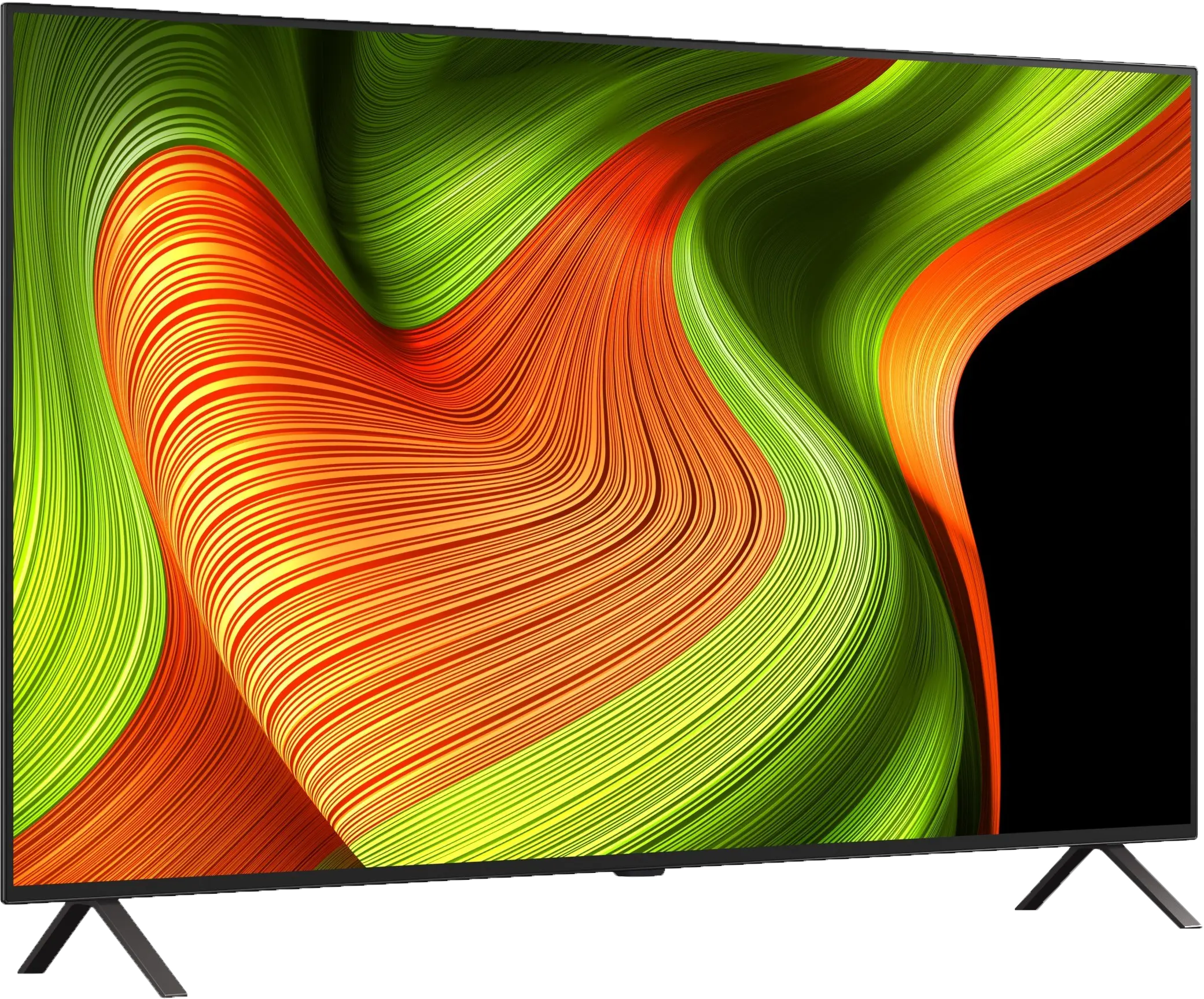
Panel type: LCD VA
Resolution: 3840x2160
System: Tizen
Model year: 2024
Complete the survey to find out the result

Panel type: WRGB OLED
Resolution: 3840x2160
System: WebOS
Model year: 2025
Complete the survey to find out the result

Overall rating
7.0
7.8
Movies and series in UHD quality
6.9
7.9
Classic TV, YouTube
6.5
8.6
Sports broadcasts (TV and apps)
6.2
8.5
Gaming on console
8.2
9.2
TV as a computer monitor
7.6
7.6
Watching in bright light
6.5
4.9
Utility functions
8.1
8.3
Apps
8.7
8.7
Sound quality
5.8
7.0
Complete the survey to find out what fits your preferences
Advantages
Unique design and 'Art' mode – the television fits perfectly into interiors and serves as a digital picture frame
Matte panel – effectively reduces light reflections
Possibility of personalising the television's frames – adapting the appearance to the interior
Dedicated wall mounts included (value approx. 400 PLN) – the television can fit practically flat against the wall
High brightness (650 cd/m²) – excellent visibility even in well-lit rooms
VA panel – decent contrast
Good motion fluidity – 120Hz*
Support for VRR, ALLM and HGiG – a full set of gaming features
Smooth tonal transitions – one of the best results in this category among the tested televisions
One Connect module – minimises cable clutter, ensuring tidiness
Tizen system – responsive, intuitive
*Does not apply to the 43 and 50-inch variants (60Hz)
Perfect black and contrast
Pleasant image in HDR format
Excellent colour reproduction capabilities
120Hz OLED panel - great motion fluidity
4 HDMI 2.1 ports and full support for gamers (VRR, ALLM, Dolby Vision Gaming, HGiG)
Very low input lag
Correct content scaling and good digital processing
User-friendly webOS system with a Magic remote
Built-in USB recording function from built-in DVB-T/T2 tuners
Disadvantages
Lack of local dimming – affects the quality of black, especially in dark scenes
Average viewing angles – the picture loses quality when viewed from a wider angle
Average sound quality – flat sound without depth
Limited number of HDMI 2.1 ports – only one port supports full 4K@120 Hz
Lack of Dolby Vision – the television only supports HDR10 and HDR10+
Average brightness and poor performance in bright rooms
No support for DTS formats
Different remote versions in derivative models – difficult to predict which version we will receive
Our verdict
LG B5 is really a good OLED television, which shows that you don't have to spend a fortune for very good quality. It offers deep blacks typical of organic panels, very good colour reproduction – especially after calibration – and enjoyable HDR movie watching experiences. All of this means that evening screenings can provide cinema-like emotions even without resorting to much more expensive screens. The smoothness of the picture and the set of features for gamers also deserve recognition. A 120 Hz panel, low input lag, full support for HDMI 2.1, variable refresh rates, and Dolby Vision Gaming mode make the B5 a very versatile screen – both for gaming and watching sports. The friendly webOS system with a Magic remote adds to the package, providing convenient access to content and simplifying operation. However, not everything is perfect. Compared to the B4 model, a slight drop in brightness can be noticeable, especially in very bright rooms. For some users, the lack of DTS audio support may also be a problem, which could force some workarounds when connecting Blu-ray players. Despite this, LG B5 remains one of the most sensible choices for those who want to enter the world of true cinema – without overspending, but also without major compromises. It's a screen that doesn’t need to prove anything – it simply delights the eye with excellent picture quality and works as it should.
TV appearance





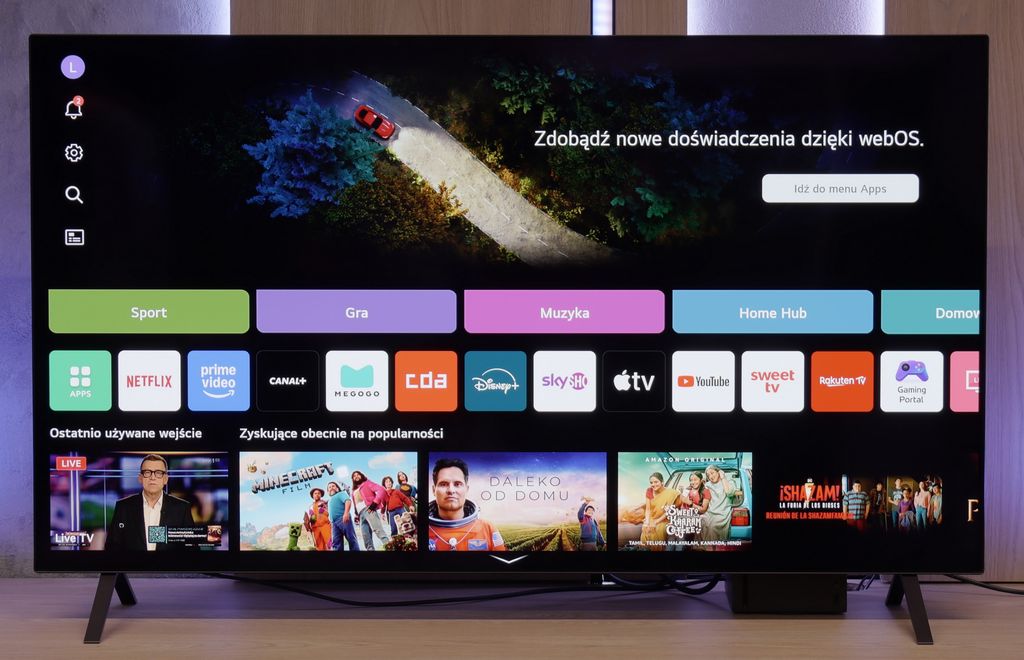
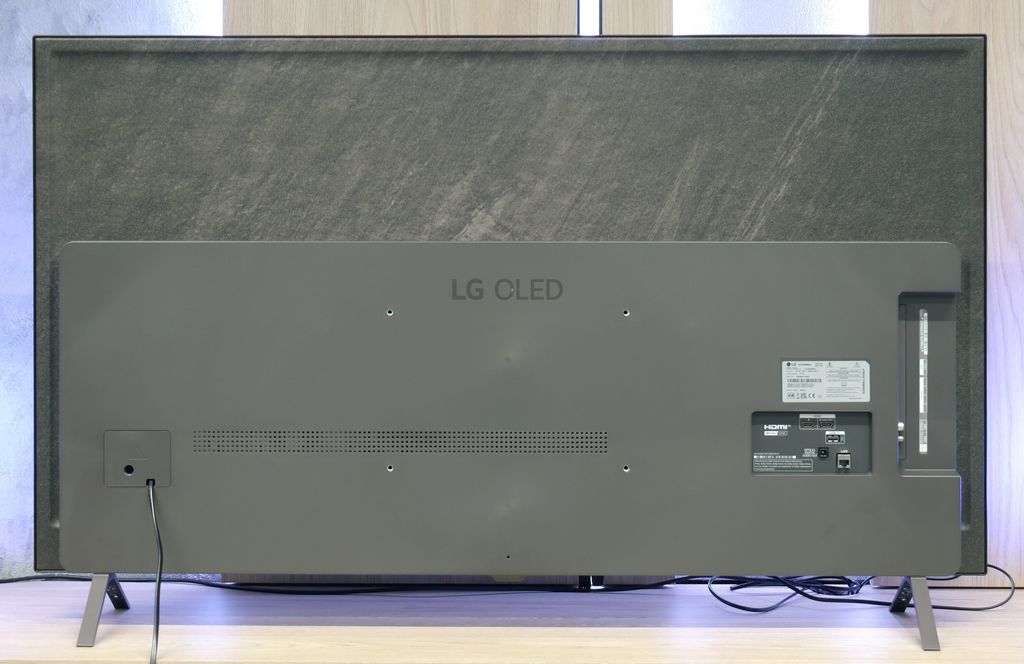

Contrast and black detail
5.6/10
10/10
Local dimming function: No
Contrast:

Result
4,200:1

Result
4,800:1

Result
5,100:1

Result
5,300:1

Result
3,850:1

Result
∞:1

Result
∞:1

Result
∞:1

Result
∞:1

Result
∞:1
Halo effect and black detail visibility:


Samsung The Frame uses a VA panel, which in itself provides quite high contrast. In our tests, the results oscillated around 4000–5000:1, which will be more than enough for most users. However, the lack of local dimming is noticeable, especially on more demanding test slides. In dark scenes, it can be observed that black has a subtle hint of navy blue. During the day or in a well-lit room, this will not be an issue, but during an evening viewing, more discerning viewers may feel a slight deficiency.
If you are looking for changes compared to last year's LG B4, we will immediately dispel any doubts – you won't find any in this category at all. And that's good. Because how to improve something that is already bordering on perfection? The LG B5, as a television with an organic WOLED panel, offers black as tar scenes and a contrast that is hard to find even in the most expensive LCD screens. The display is as clear as a bell – no bleed-through, no streaks, no halo effects that can ruin the atmosphere in cinema scenes. Here, everything is in its place. Details separate from the black with surgical precision, nothing blends together, even in the most demanding sequences from films such as The Revenant or Oblivion. This is the type of television that can enchant you, especially when the room goes completely dark. When the lights go out, the LG B5 takes centre stage – and it does so spectacularly. In these conditions, OLED shines the brightest, and even top LCD models – despite advanced dimming and hundreds of zones – simply fall behind.
HDR effect quality
6.4/10
6.2/10
Luminance measurements in HDR:

Result
679 nit

Result
663 nit

Result
712 nit

Result
698 nit

Result
726 nit

Result
587 nit

Result
593 nit

Result
628 nit

Result
589 nit

Result
470 nit
Scene from the movie “Pan” (about 2800 nits)


Scene from the movie “Billy Lynn” (about 1100 nits)


Static HDR10


Dynamic: HDR10+
Dynamic: Dolby Vision


HDR luminance chart:
LG OLED B5
Luminancja HDR
Luminance of RGB colors
Samsung The Frame LS03D
Luminancja HDR
Luminance of RGB colors
Samsung The Frame LS03D performs really well with brightness. Results of 700 nits make bright elements on the screen look striking and detailed, whether they illuminate the entire screen or appear as small points of light against a dark background. In more demanding scenes, like the fourth sequence from the film Sicario 2, the black levels are average, but we have already discussed this in the section on contrast. As for brightness – the television definitely excels here. An additional advantage is the quantum dot coating, which is QLED technology. Thanks to this, the colour palette coverage has been improved, although The Frame does not stand out in this regard compared to the competition.
The LG B5 is a moderately bright OLED television. Regardless of the scene, it can generate around 500 nits of peak brightness. Interestingly, it achieves this even in full-screen shots saturated with white, where most OLEDs typically struggle. So is this screen suitable for HDR films? Indeed – and very much so, because such brightness allows you to truly feel the magic of HDR effects. However, it is worth noting that compared to last year's B4 model, the new B5 is darker – by about 100 nits. It may seem like a small amount, but at such average peak values, it makes quite a significant difference. Fortunately, the television compensates with another advantage – excellent coverage of the DCI-P3 and BT.2020 colour gamut. As a result, HDR films look really colourful, vibrant, and impress even in more demanding scenes.
Factory color reproduction
7/10
8.2/10


Factory Mode
After calibration


Factory Mode
After calibration
Samsung offers several picture modes on its televisions, but undoubtedly the Filmmaker Mode is the one that should provide the most natural representation of content. Unfortunately, as is often the case with mass production, the differences between units can be considerable, and our tested model was not free from a few issues.
In the case of SDR content, the white balance leaned heavily towards red, with a slight boost in blue. This effect was particularly noticeable in comparison images – for example, in a photograph of a boy whose face was unnaturally flushed. The gamma, or brightness characteristic, also did not perform perfectly – the image was slightly brightened, which detracted from its depth.
In 4K HDR content, the white balance was again dominated by red, this time in combination with green. Meanwhile, blue clearly lost intensity, which was easy to notice on the Color Checker palette, where colours began to "drift" in the wrong direction. The EOTF curve, responsible for brightness in HDR content, showed that the television has a tendency to excessively brighten the image, especially in the darkest elements of scenes.
Overall, while it did not look terrible, it definitely required adjustment. Fortunately, Samsung offers extensive calibration options, which provides the chance for a significant improvement in image quality. Therefore, we proceeded with professional calibration to extract the full potential from this television.
We tested the B5 in Filmmaker mode and... we would love to see more TVs like this straight out of the box. Truly. The white balance is set very well – there's practically nothing to complain about. Well, if one were to nitpick, one might notice a slight deficiency in blue, which makes the overall image seem slightly yellowish. But that’s just our editorial quibbling. Most of you probably wouldn’t even notice it. We also have minimal reservations about brightness management in HDR format. The EOTF curve – which is responsible for how the TV distributes brightness in a scene – is slightly below ideal. In practice, it may happen that the darkest parts of the image are displayed too dark and simply… disappear. But these are details that only come out in measurements. Generally: we are impressed. However, we also know that LG TVs respond very well to professional calibration. You can achieve almost reference-quality picture from them, so – while it's already very good out of the box – we allowed ourselves to go a step further and refine everything to perfection.
Color reproduction after calibration
8.1/10
9.1/10

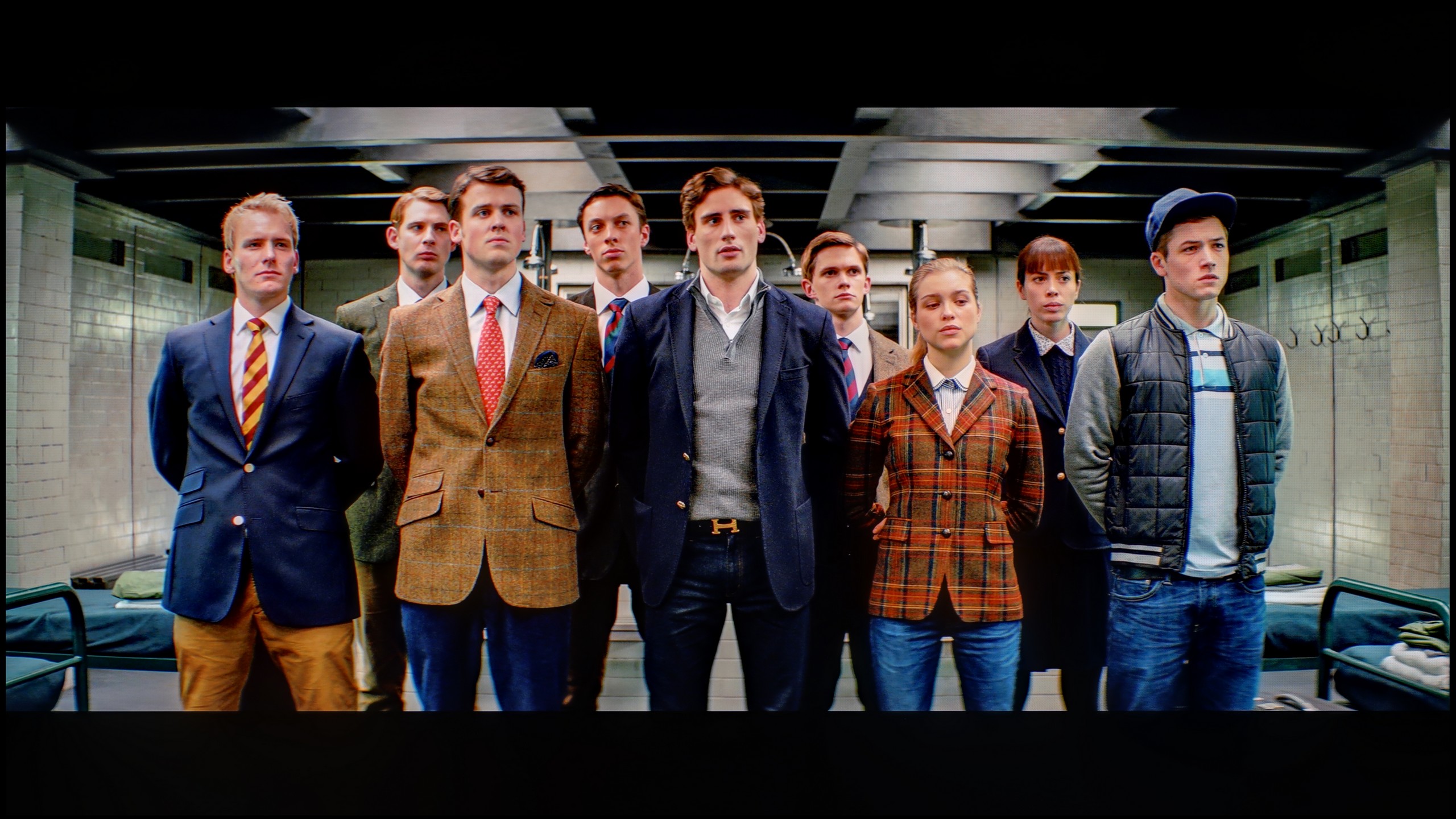

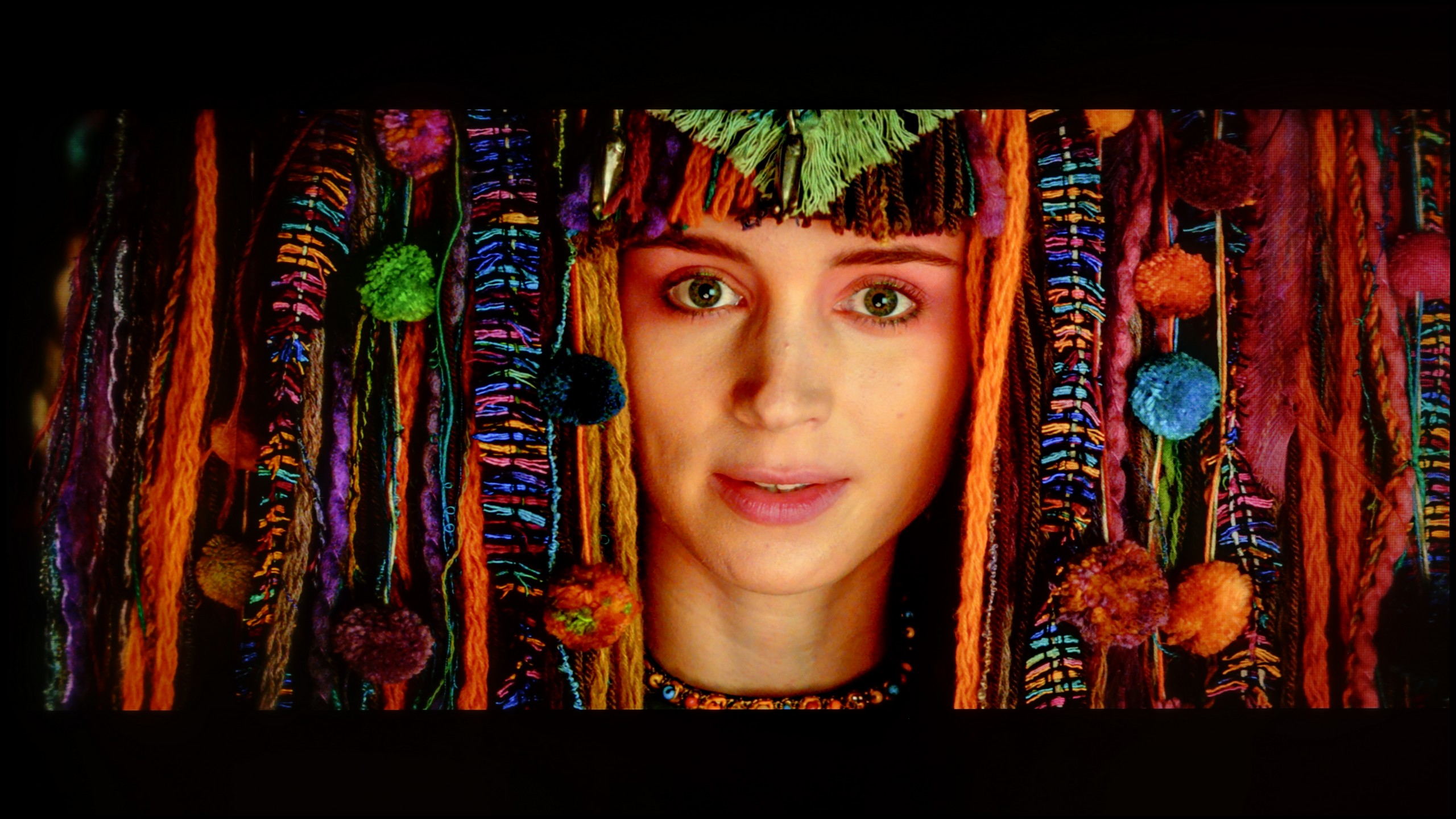
After professional calibration, the Filmmaker Mode shows its full potential. The white balance in HD content is exemplary – errors at the level of 0.5 indicate almost perfect colour reproduction accuracy. The image now looks natural, and the colours are precisely as they should be. In 4K HDR content, the effect is not quite as perfect, but it still maintains a really high level. The colours are vibrant, well-saturated, and the overall picture quality can be impressive.
So where does the problem arise, given our praise for colour reproduction? Unfortunately, the entire experience is marred by brightness characteristics. The gamma in HD content looks decent, but in 4K HDR it's not as good. The EOTF curve shows that the television excessively brightens certain parts of the image, which is a result of construction limitations. The lack of local dimming means that the television cannot accurately control the differences between the brightest and darkest areas of the screen. This is a barrier that simply cannot be overcome in this model.
Nonetheless, after calibration, Samsung The Frame LS03D offers excellent colour reproduction, particularly in HD content, and the overall appearance is considerably better than before the settings were corrected.
We must admit that we didn't have much work with the LG B5. It's one of those televisions that look good right from the start, but after calibration… they can really impress. The white balance was brought to almost perfect levels – to the point of errors that are invisible to the human eye, unless you are a professional colourist with a magnifying glass at the screen. We also managed to master the tendency of the television to slightly dim the darkest details, particularly in HDR scenes. After proper tuning, everything looks cohesive: black remains deep but does not consume information. Highlights maintain their natural sparkle, and colours align with the director's vision. This is truly one of those models that shows you don't have to spend a fortune to have an almost reference-quality picture. If you can opt for professional calibration – it’s definitely worth it in the case of the B5.
Smoothness of tonal transitions
9.7/10
7.2/10





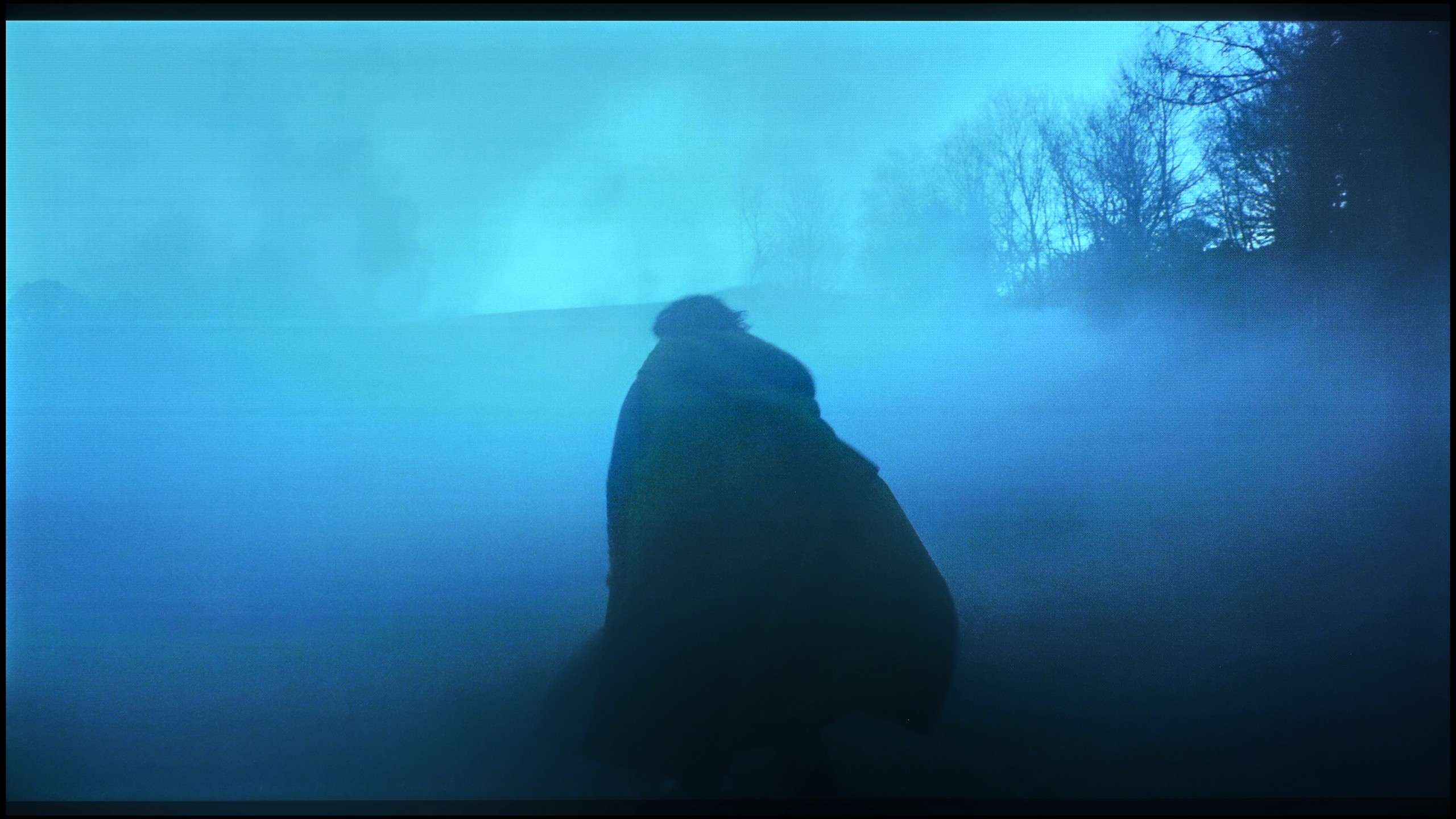

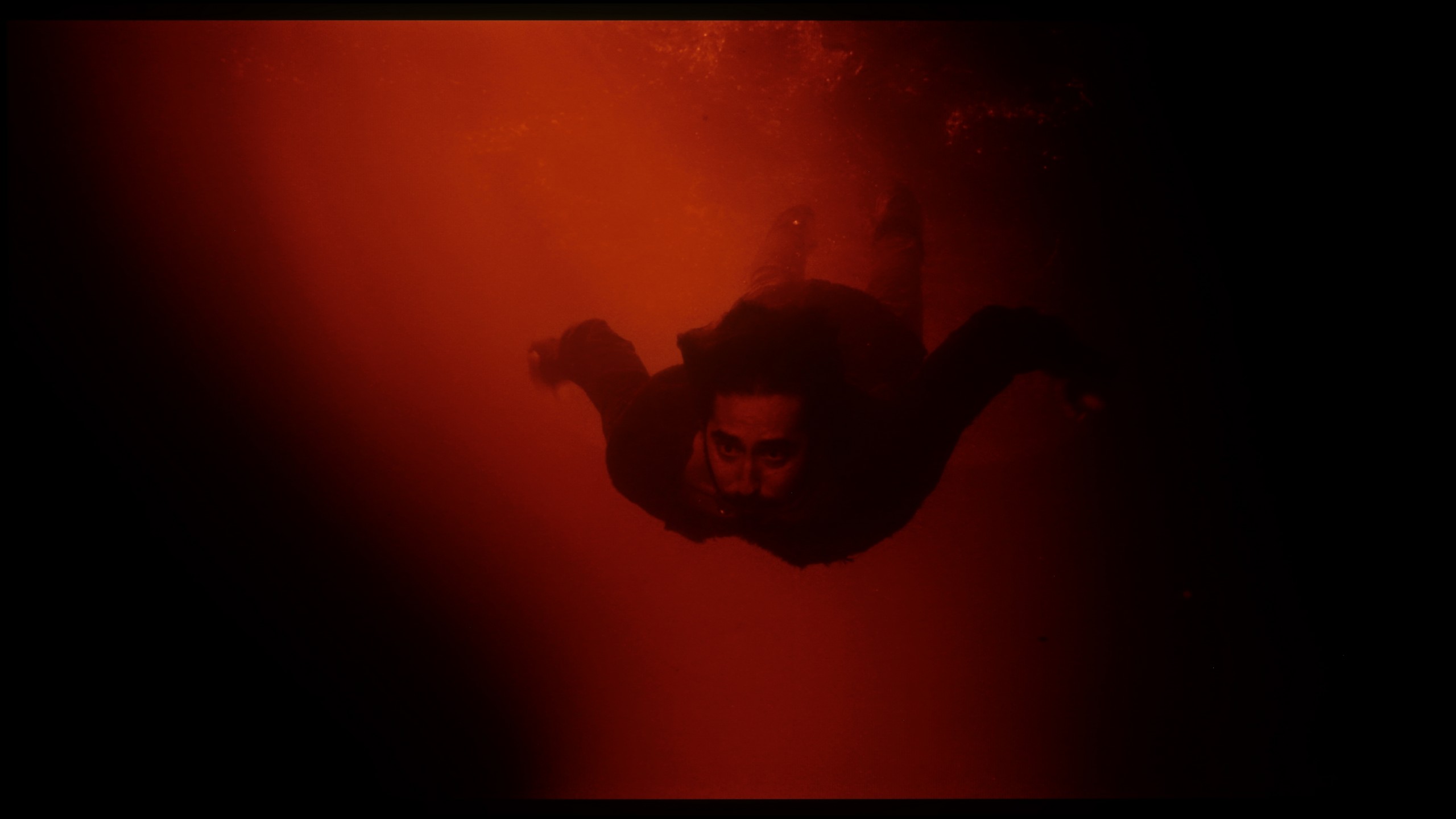




This is one of the best televisions we have had the opportunity to test in terms of the smoothness of tonal transitions. Any potential imperfections are so minor that you really have to strain your eyes to notice them. They are subtle enough that we only deducted a symbolic fraction of points in this category. Without a doubt, this is one of the greatest advantages of this model. It is possible that such a good effect is partly due to the matte screen coating, which gently masks any irregularities in the colour gradation. The smoothness of tonal transitions in Samsung The Frame LS03D is at a level that will satisfy even exceptionally demanding users. Kudos to LS03D!
The LG B5 handles colour gradation quite decently. In bright scenes, where we have smooth transitions between skin tones, the sky, or backgrounds, the television blends colours seamlessly and without any jarring effects. At first glance – it looks good, especially considering the price. However, it is enough to reach for more challenging material – those darker, more demanding scenes with a lot of subtle transitions – and the challenges begin. Minor artefacts, false contours, and slight thickening appear. It is still not a level that dazzles or distracts from the narrative, but the difference compared to more expensive WOLED models – and even more so QD-OLED screens – becomes noticeable.
Image scaling and smoothness of tonal transitions
7.1/10
7.5/10
Smooth transition function

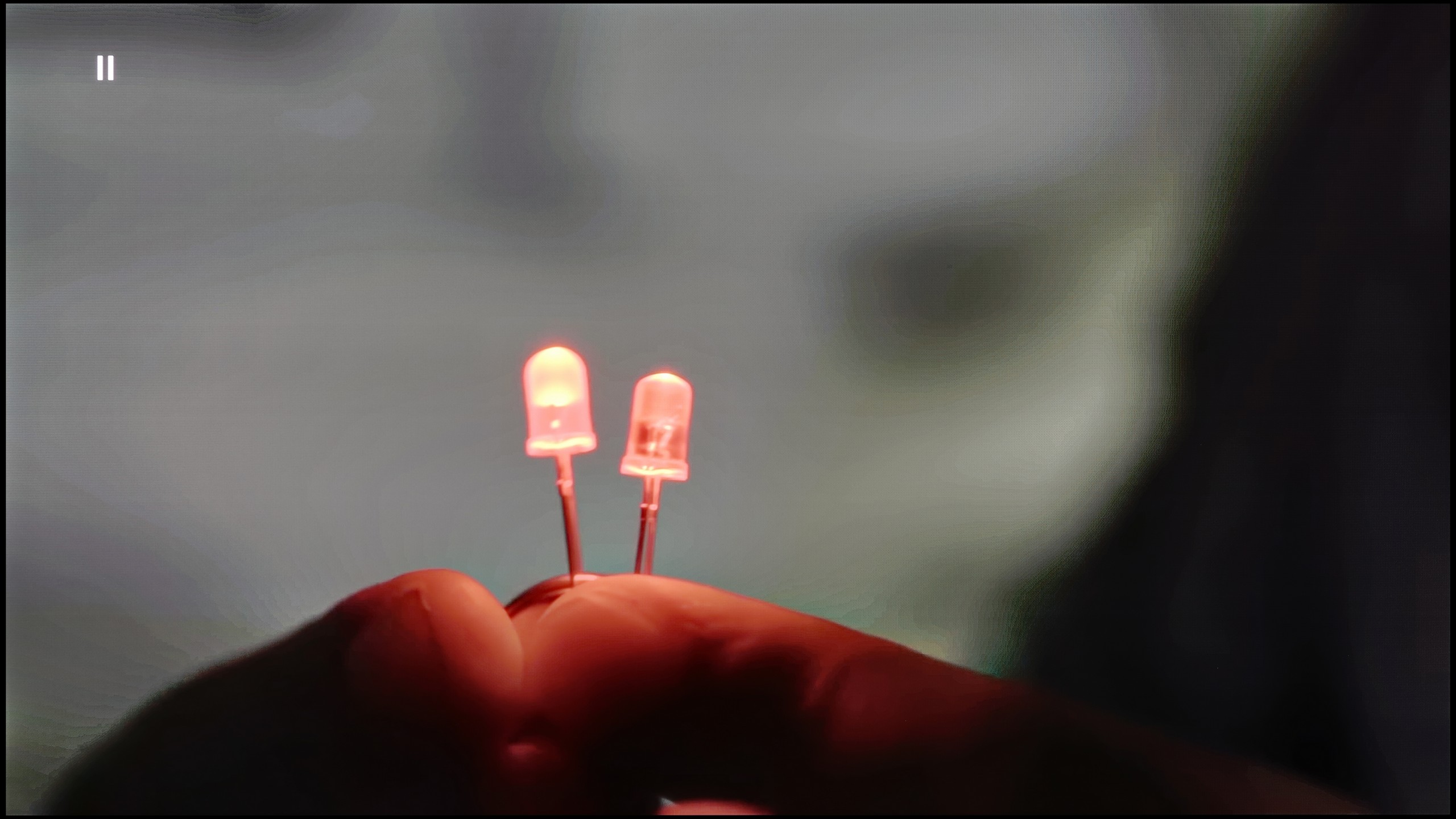
Image without overscan on the SD signal

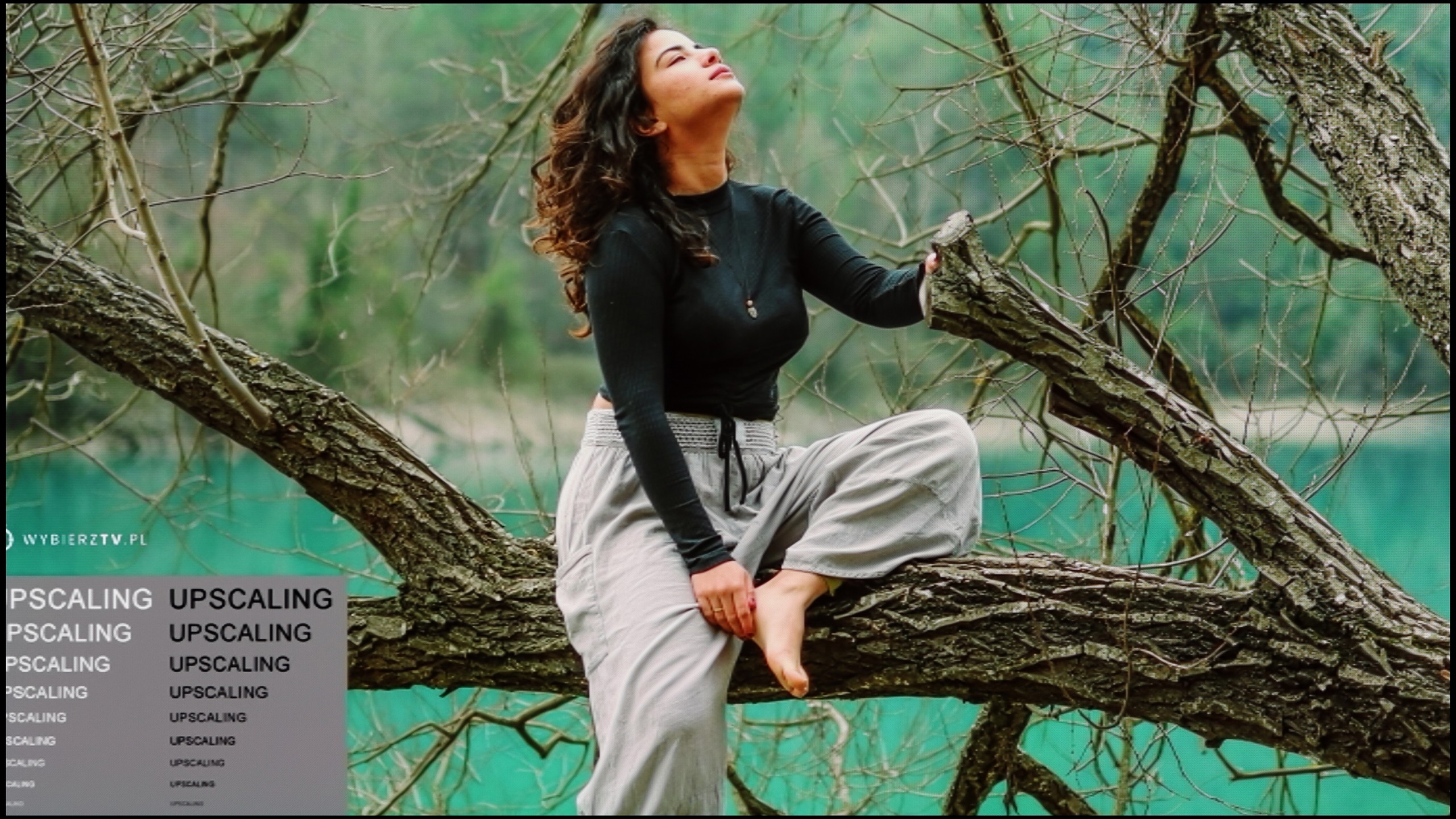
It’s time to check how Samsung The Frame LS03D performs with older, lower-quality materials. We already know that the fluidity of tonal transitions is at a very high level here, so we were curious to see how the television would handle smoothing them out.
The noise reduction feature in the "Standard" setting does its job well – tonal transitions are noticeably smoothed out, and at the same time, the image does not lose too much detail. However, it is worth noting that this effect also smooths out film grain, so its use will be a matter of individual preference.
When it comes to image scaling, the television also performed really well. The test chart turned out solid – the model was reproduced correctly, with clear details. The branches in the background, though slightly frayed in places, generally appear natural and do not stand out as imperfections.
LG B5 really positively surprised us in terms of handling lower quality content. Thanks to the enhancement and smoothing features, materials in HD resolution or even SD gain a second life. Importantly – when this option is activated at the "low" or "medium" level, we do not feel that the image is artificially softened or smoothed out unnecessarily. Details remain intact, film grain does not disappear, and the edges of objects do not look washed out 😉. This is truly a useful tool – especially if you are watching terrestrial television, archival materials, or content from YouTube in lower resolutions. The image is clear, coherent, and simply pleasant to the eye.
Scaling as such works very well – even content of poor quality is reproduced with surprising fidelity. Unfortunately, there was a slight hiccup. Although the menu contains the option to disable overscan, the television still has issues with correctly displaying images of very low resolution. It may seem like a detail, but when watching older materials – it can be irritating.
Blur and motion smoothness
6.4/10
8.5/10

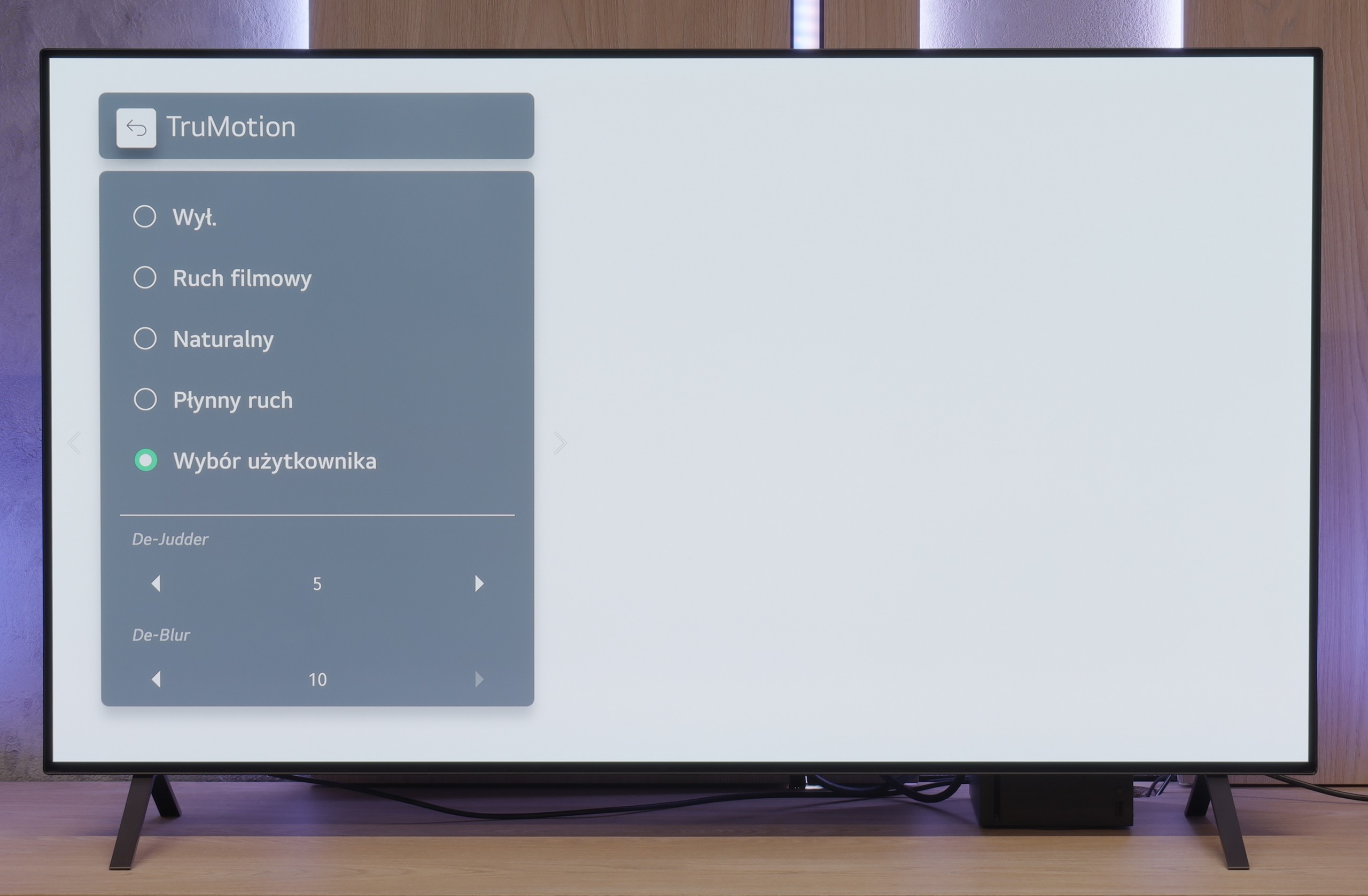
Blur (native resolution, maximum refresh rate):




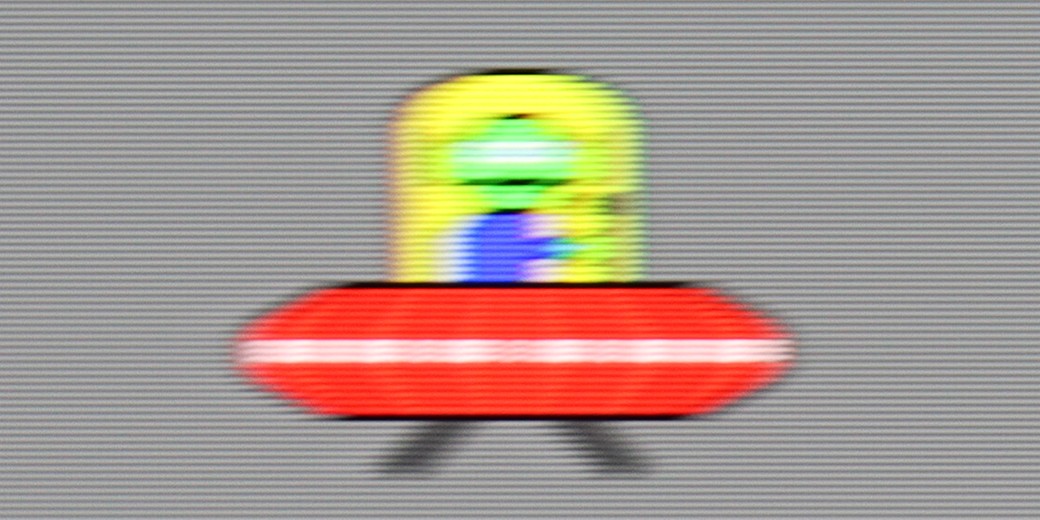

Firstly, it is worth noting that the model we tested in the size of 55 inches, like the 65, 75 and 85-inch versions, is equipped with a 120 Hz panel. Unfortunately, the 43 and 50-inch variants of this series only offer 60 Hz panels, which is worth keeping in mind when making a purchase. As for improving motion fluidity, the television offers a feature called “Picture Clarity”. This is a classic motion smoother that gives users the ability to adjust it using two sliders:
Motion blur reduction – this controls the sharpening of the image in dynamic scenes. The higher the value, the less blur during quick camera movements or moving objects. However, overly aggressive settings may cause the image to become unnatural, appearing like a “soap opera”.
Judder reduction – this slider influences the smoothness of frame playback, particularly in materials with a lower frame rate, such as films (24 fps). Higher settings can smooth motion but may also lead to excessive “plasticity” of the image.
Both sliders operate on a scale from 0 to 10, allowing for precise adjustment of the effect to one’s own preferences. It is worth experimenting with the settings to find the perfect balance between fluidity and a natural appearance of the image. We recommend setting them as shown in the picture.
LG B5 is a television with a 120 Hz OLED panel. It may not sound as impressive as the marketing claims of “144 Hz” or “165 Hz” found in gaming monitors, but honestly? The smoothness is excellent nonetheless. The picture is sharp, fluid and simply enjoyable to watch – even when there is a lot happening on screen. The organic panel does its job – the pixel response time is almost instantaneous, meaning there’s no sign of smearing or blurring that can spoil dynamic shots. Sport, fast-paced games – everything looks clear and distinct.
We also have the classic LG smoothness enhancer, TruMotion. This allows you to smooth out films shot at 24 frames per second – which, to put it bluntly, is most of what you watch on Netflix or from Blu-ray discs. If you set lower values on the “De-Judder” slider, you’ll get a picture closer to a cinematic look – with a slight judder, but without any artificiality. Higher settings? A soap opera effect is guaranteed. Fortunately, LG gives you the option to tune everything to your liking.
Console compatibility and gaming features
8.8/10
10/10
- ALLM
- VRR
- VRR range48 - 120Hz40 - 120Hz
- Dolby Vision Game Mode
- Correct implementation of HGIG
- 1080p@120Hz
- 1440p@120Hz
- 4K@120Hz
- Game bar

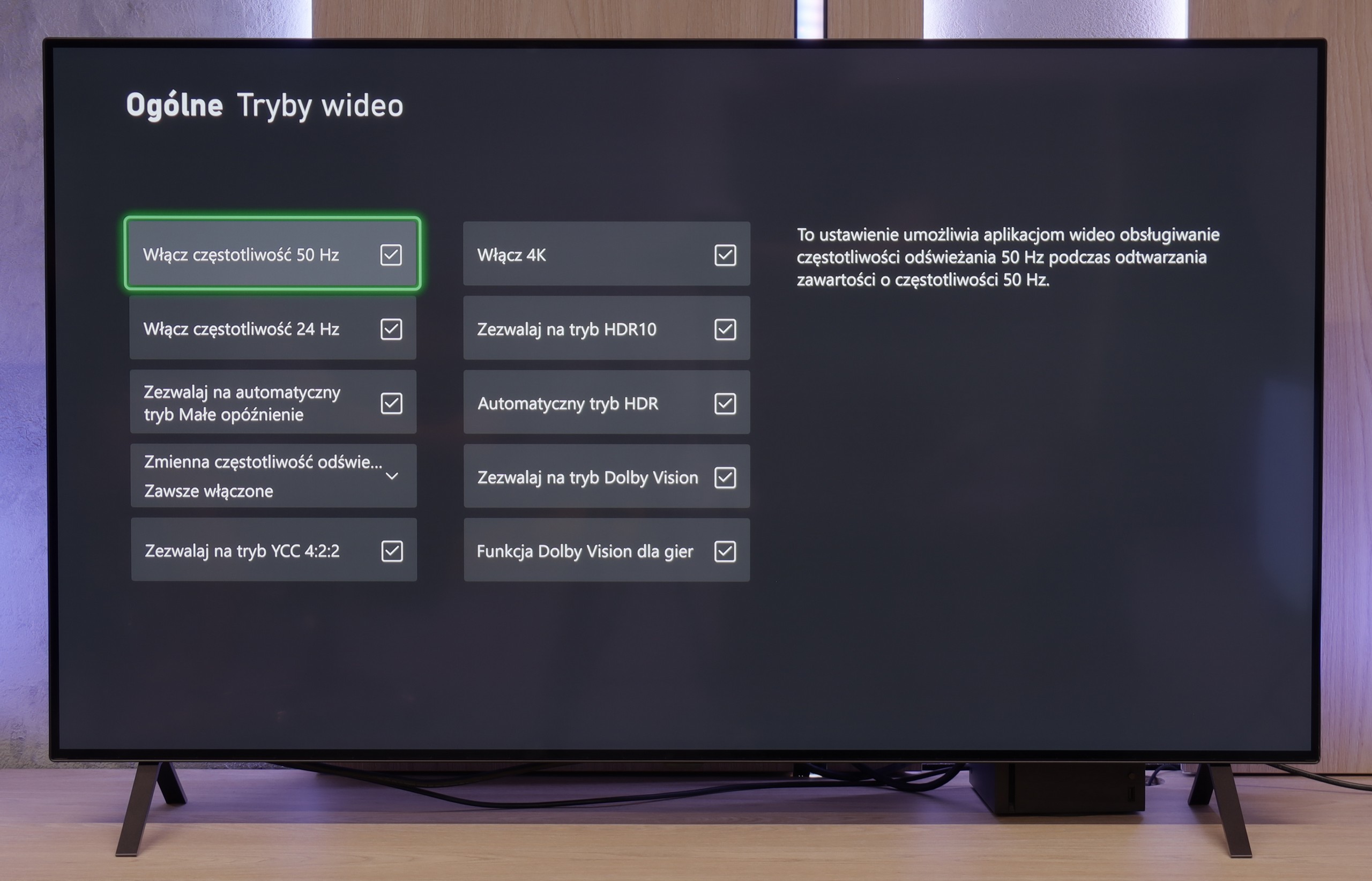

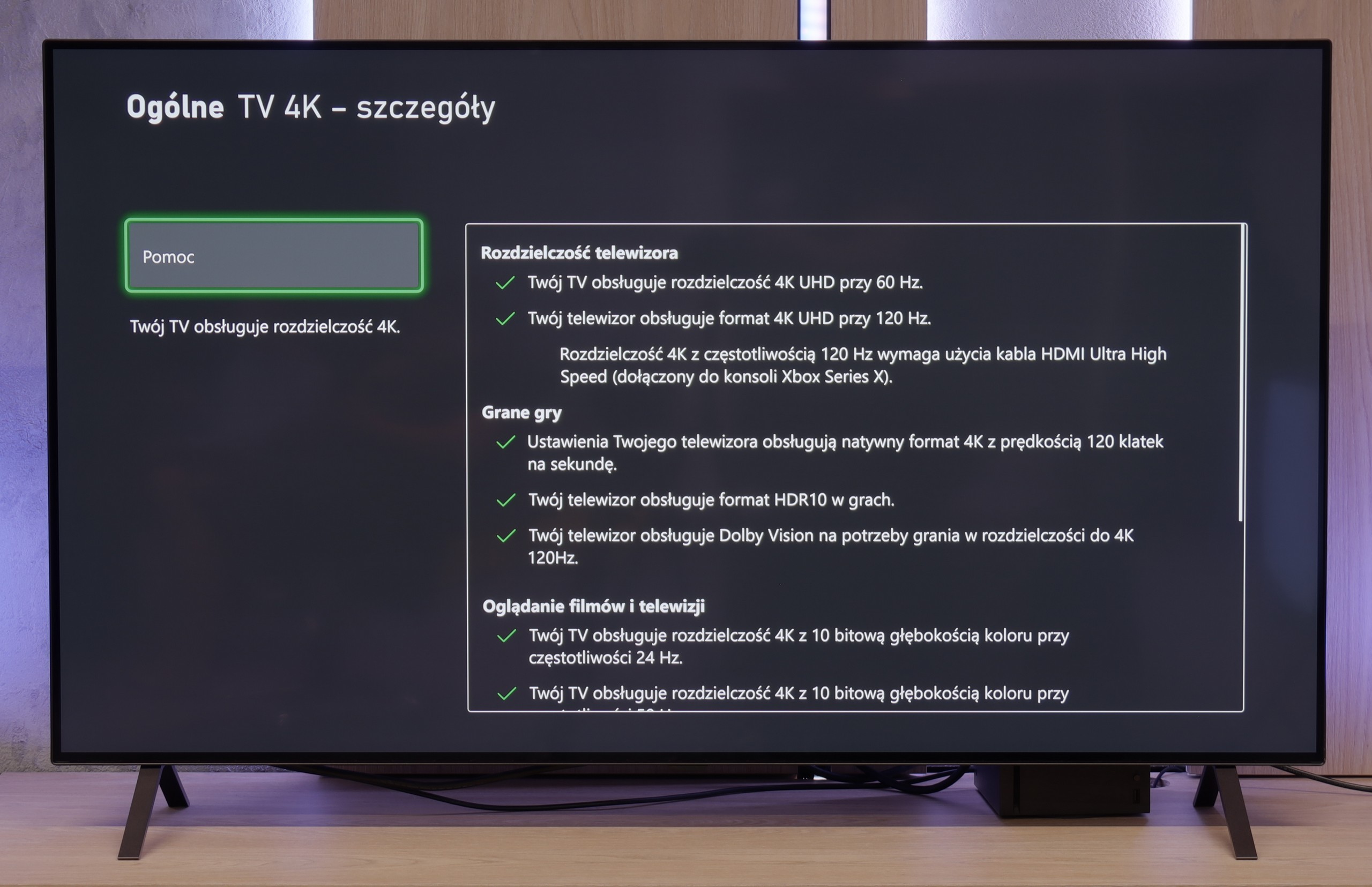

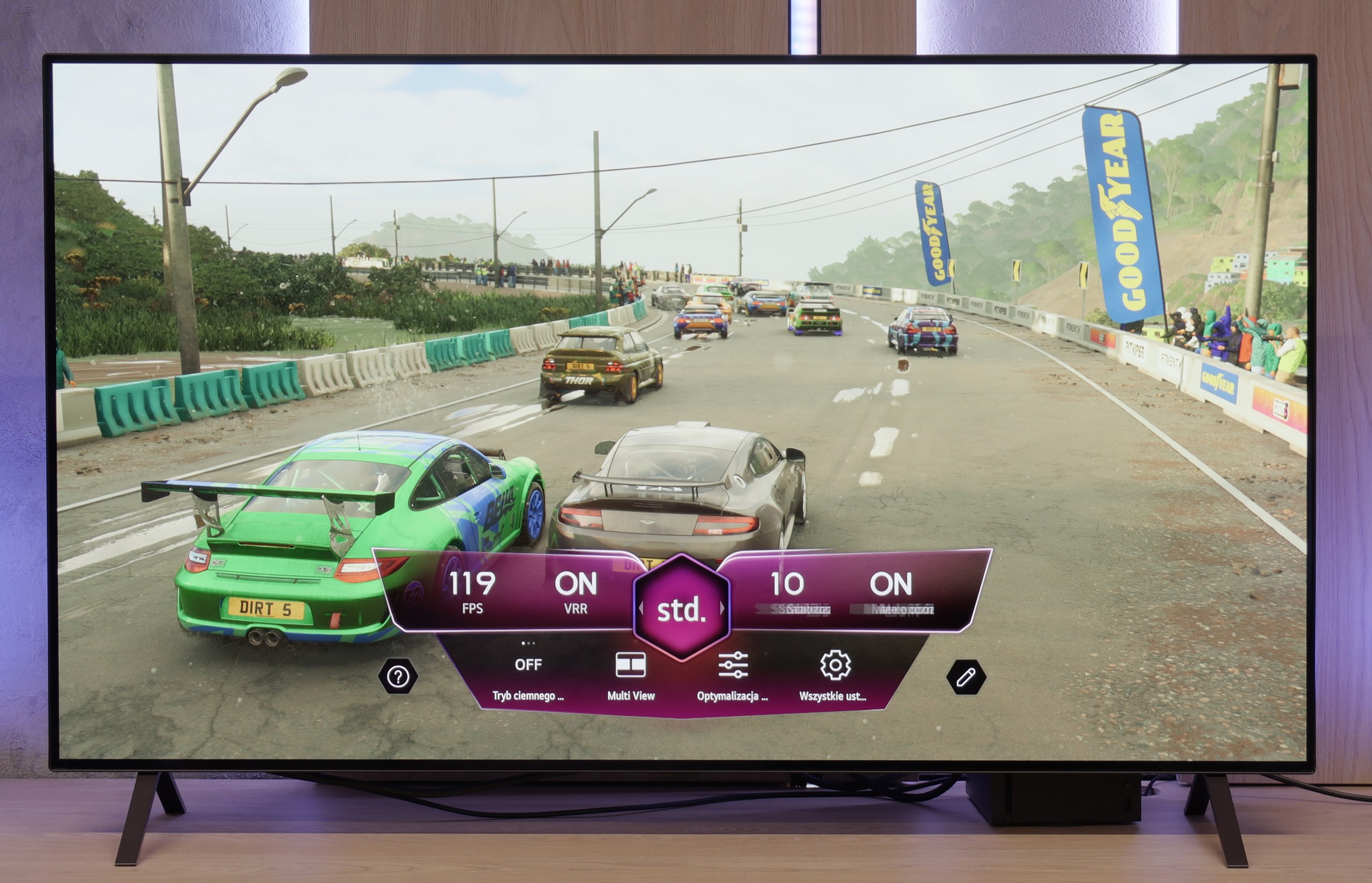

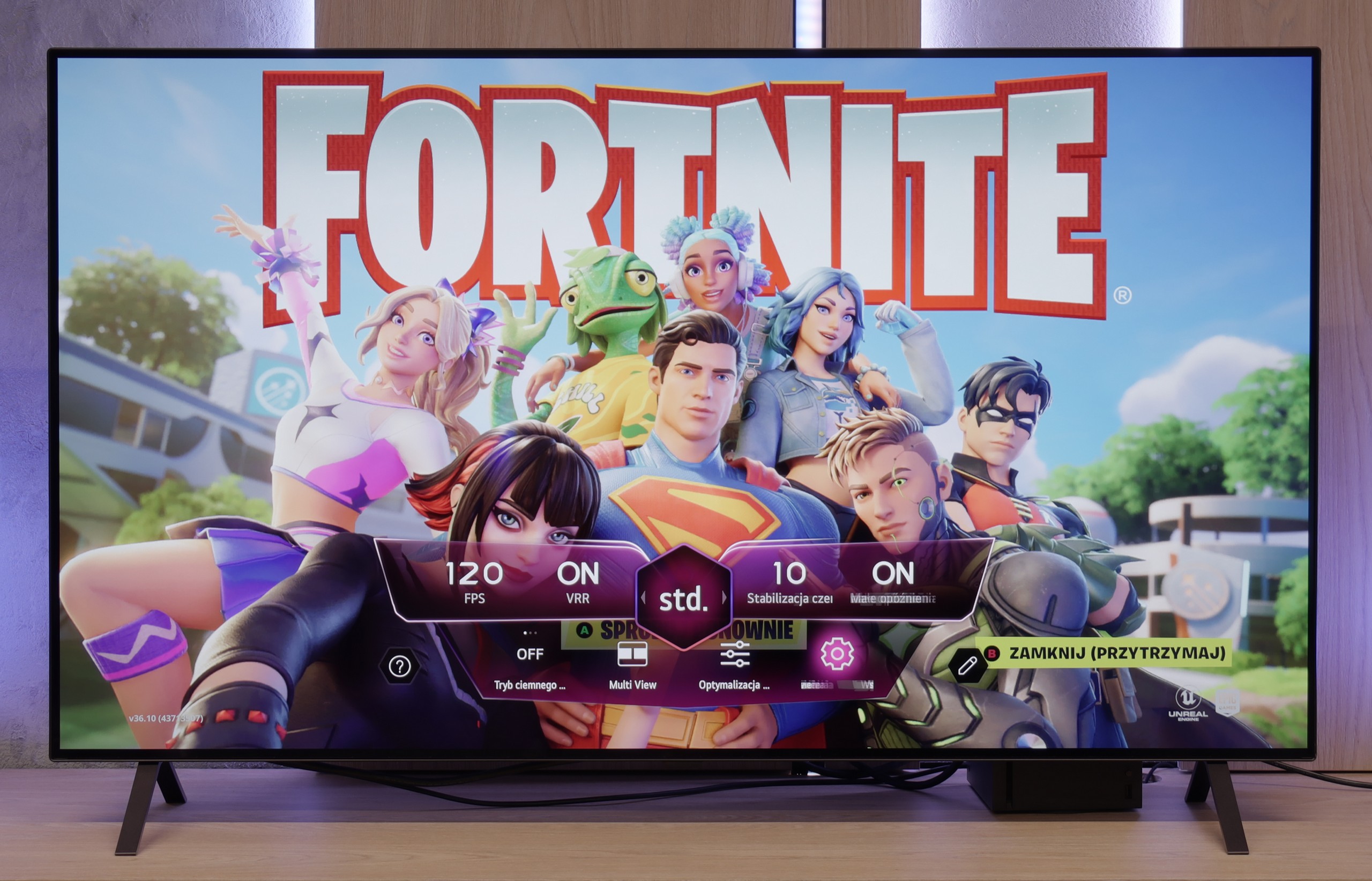
The Frame LS03D in the 2024 version has been equipped with four HDMI ports, but only one of them supports the 2.1 standard with a bandwidth of 40 Gb/s. This is important information if we plan to connect more than one device that requires a 4K@120 Hz signal – for example, two consoles or a console and a gaming PC.
In terms of features for gamers, The Frame truly has a lot to boast about. Here we find ALLM (Auto Low Latency Mode), VRR (Variable Refresh Rate), and HGiG. It is worth highlighting that HGiG has been very well implemented here, which is particularly important as the television does not support Dolby Vision in games (which is only available on Xbox consoles). In this case, HGiG turns out to be a better standard for gaming.
Samsung has also not forgotten about features that enhance gaming comfort. Game Bar is an advanced panel for gamers that allows for quick adjustment of screen settings without the need to dig through the television's menu. We can even change the aspect ratio from 16:9 to a panoramic 21:9, which may be a significant advantage for some gamers.
However, Samsung's biggest ace up its sleeve is the Game Motion Plus feature. This is a special smoothness enhancer dedicated to games that adds additional frames of animation without significantly affecting input lag. The effect is truly noticeable – the image appears much smoother, which fans of dynamic titles will particularly appreciate.
In summary – Samsung The Frame LS03D is a television that offers a solid set of features for gamers. While the limitation to one HDMI 2.1 port may be a downside, the rest of the solutions makes gaming on this television a truly enjoyable experience.
There are already a few televisions on the market with the label “for gamers” that, in practice, don’t understand what that means. The LG B5 is not one of them. Everything here is spot on – there are four HDMI 2.1 ports, it has 120 Hz, VRR, and ALLM, and it even has a Game Bar that is actually useful, not just looks good in the brochure. You connect your console – it works. You set 4K at 120 Hz – it works. You have an Xbox and want to play in Dolby Vision – it works too. And this is not in the sense of “theoretically supports”; it really turns on, looks good, and you don’t need to fiddle with the settings for half an hour. Additionally, there’s the HGiG picture mode that LG implemented correctly – which means HDR in games doesn’t turn the screen into a flash lamp, but shows exactly what it should. There are no surprises here, no strange limitations, no “buts.” And you know what? That’s how it should be. Cheers to the LG B5!
Input lag
10/10
9.9/10
SDR
HDR
Dolby Vision
In terms of latency, The Frame LS03D is truly impressive. 13 ms for 60 Hz content and 8 ms for 120 Hz are results that will satisfy even the most demanding gamers. Such low values mean that responses to controller movements are almost instantaneous. In dynamic games, such as shooters or racing games, every fraction of a second matters – this is where Samsung LS03D excels.
Here we won't elaborate – the LG B5 simply has excellent input lag. For 60 Hz content, it achieves results below 10 ms, and for 120 Hz it even drops to around 5 ms. These are values that cannot be fairly critiqued. It simply works instantly, with no delays, no surprises. Well… almost. Because as usual, there is a small asterisk with the Dolby Vision Gaming mode. In this mode, the response time slightly increases. It’s nothing dramatic – they are still very low values, hardly noticeable during gameplay – but if you play exclusively competitive titles and fight for every millisecond on the XBOX, it’s worth keeping in mind.
Compatibility with PC
7.6/10
7.6/10

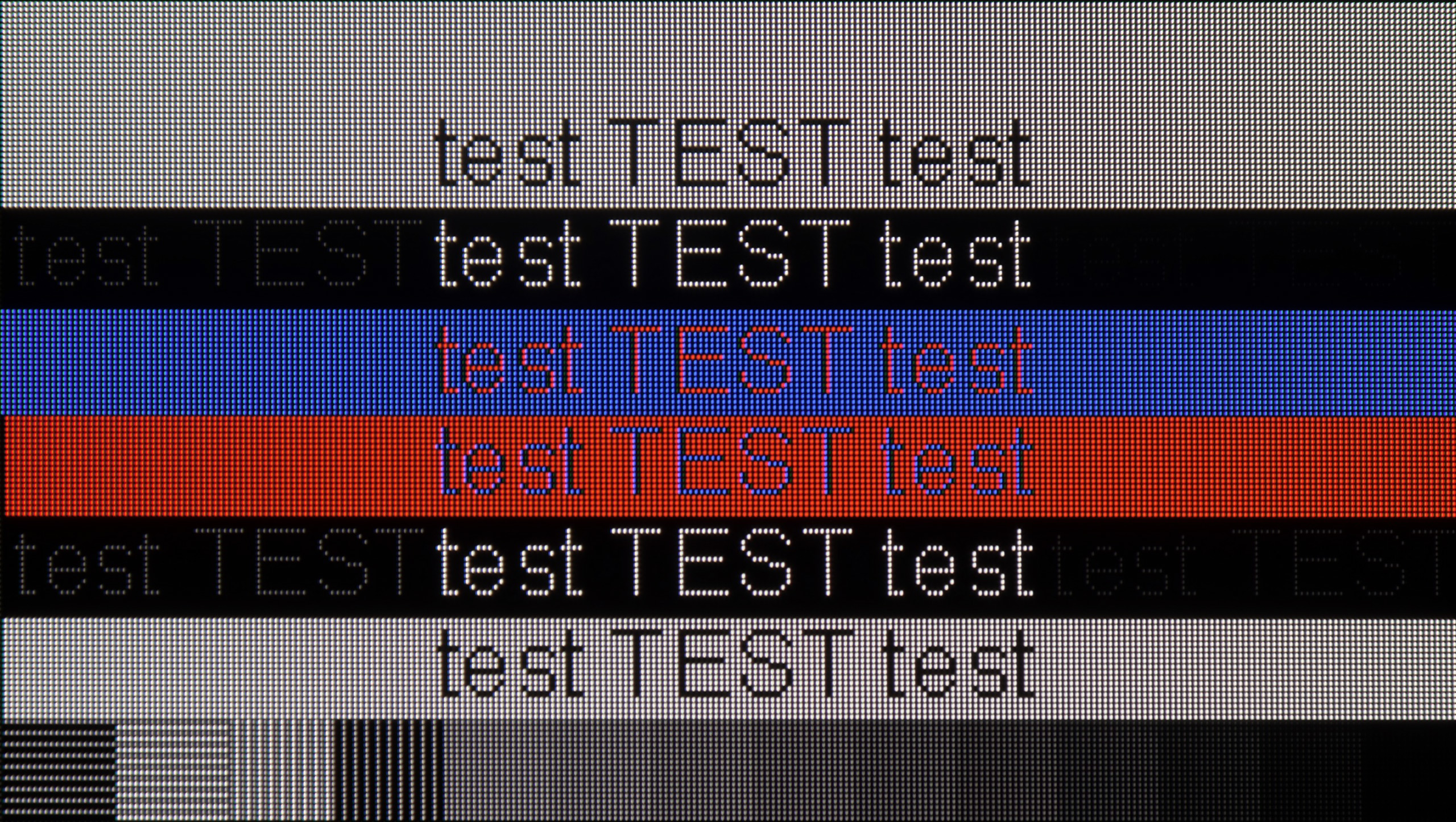
Using a computer on The Frame is truly a pleasant experience. The fonts are clear and well-rendered thanks to support for chroma 4:4:4. There is no blurring or fuzziness, which often occurs in cheaper televisions. Of course, if someone looks very closely at small text, they may notice minimal imperfections, but that's really a minor detail that doesn't interfere with everyday tasks. It is also suitable for PC gaming. The 120 Hz panel, support for G-Sync, and really low input lag ensure that games run smoothly and without delays.
LG B5 is a television that communicates well with a computer. You won't find gaming frills like 144 or 165 Hz here, but is that really necessary for anyone? Thanks to the 120 Hz panel, low input lag, and G-Sync support, it's truly a very good screen for gaming on PC. No stuttering, no tearing, with lightning-fast response.
But it's not just for gaming. You can also quite comfortably... simply work on the B5. The television properly supports chroma 4:4:4, so fonts are readable, interfaces are clear, and your eyes won't hurt from blurred letters. This isn't a given, even among more expensive models. However, there is one 'but' – and this applies not only to the B5, but to any OLED with a WOLED panel. The RWGB subpixel arrangement can cause a slight shadow along the edges of fonts. This isn't something that stands out from the sofa. It's something that someone sitting with their nose to the screen and spending half the day in Excel would notice.
Viewing angles
3.3/10
7.4/10
The viewing angles of the Samsung The Frame LS03D are average, which is typical for a VA panel. Here lies a bit of a problem – this television is supposed to serve as a display for images and works of art, which are not always viewed head-on. When viewed at an angle, colours begin to lose their intensity, and blacks turn into shades of grey. This is not at a level that completely ruins the experience, but if the television is to be placed where it will often be viewed from the side, the effect may be noticeable. It's a shame, as better viewing angles would be a significant advantage for a television of this purpose.
In terms of viewing angles, the LG B5 performs very well – exactly as one would expect from an WOLED panel. No matter from which side you sit, the picture maintains its quality. The colours do not wash out, the contrast does not deteriorate, and the details remain clearly visible. However, it must be said that this is not the level of Samsung Display's QD-OLEDs. Those can hold colour saturation even better at extreme angles. But if you do not plan on watching films while sitting at a 90-degree angle – the B5 is more than sufficient. It is one of those televisions that is simply pleasant to look at – from every angle.
TV efficiency during daytime
6.5/10
4.9/10

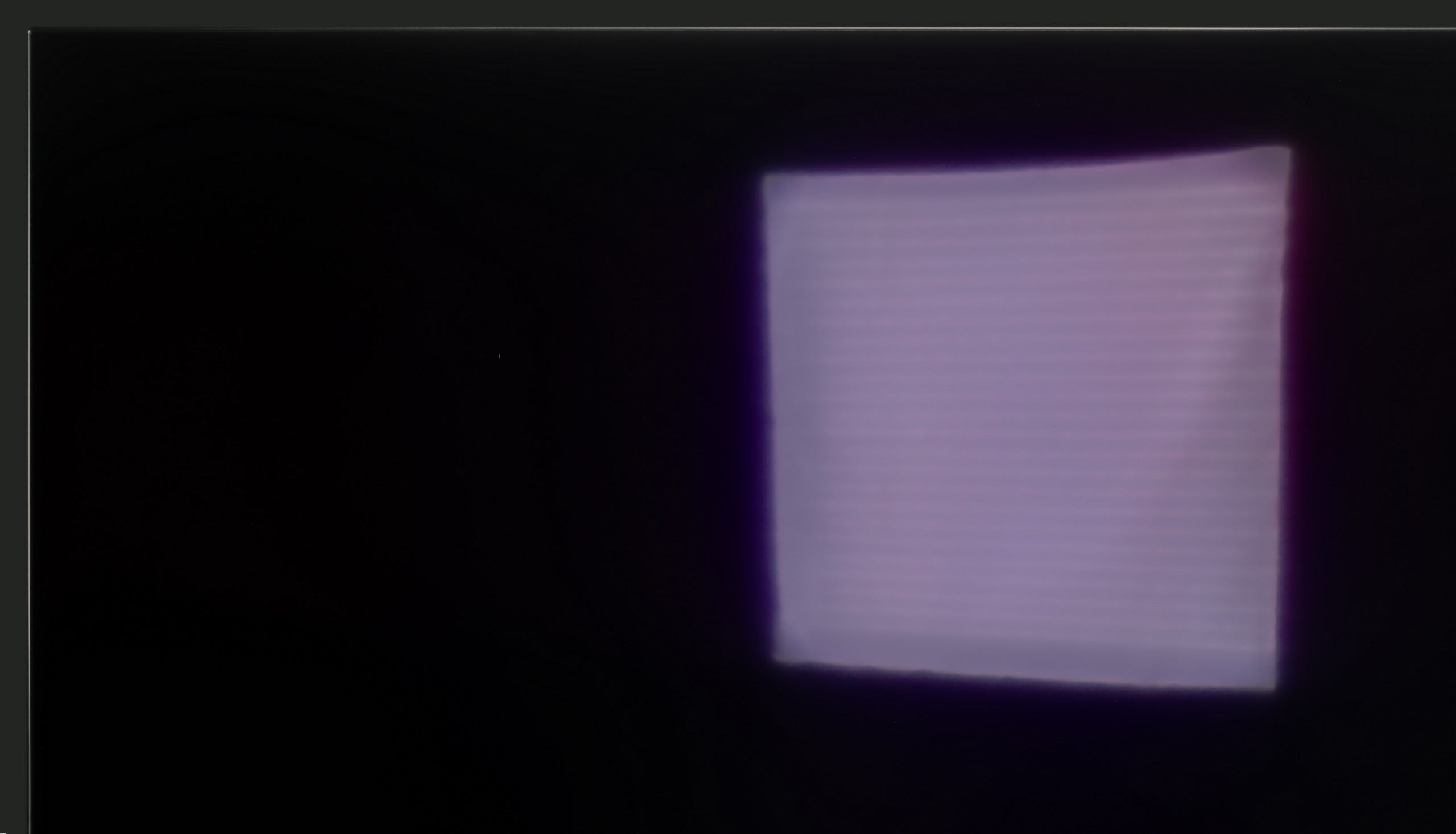

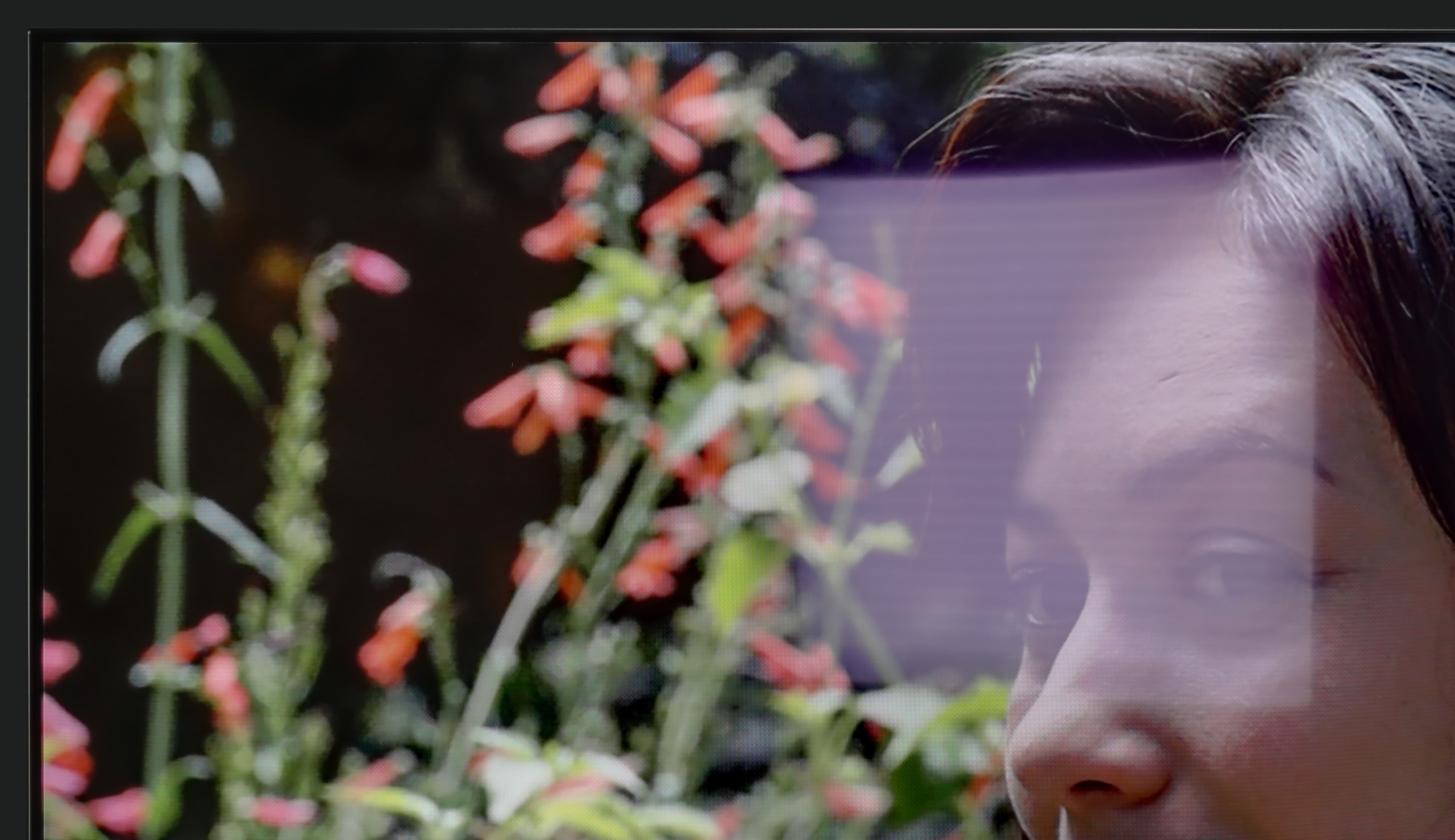
Matrix brightness
Average luminance SDR
LG OLED B5: 279 cd/m2
Samsung The Frame LS03D : 645 cd/m2
Samsung The Frame is equipped with a matte panel that excels at suppressing direct light reflections. This means that even in a brightly lit room, the image remains clear, and reflections do not interfere with viewing. Of course, as is often the case with matte finishes, there is a trade-off – colours lose some intensity, and black may appear more washed out during the day. Fortunately, the television compensates for this with a brightness level of 650 cd/m². This ensures that the image is bright, clear, and well visible even in a heavily sunlit room.
LG B5 is a television that feels best after dark. But when the sun comes out, it becomes a challenge. The brightness of this model is rather average, and the anti-reflective layer... also average. There are no special coatings here that handle reflections or very bright daylight well. So if you plan to place this television opposite a large, uncovered window – it could simply be difficult to see anything.
Fortunately, there is something worth praising: the glossy WOLED panel maintains colour saturation well. Even in difficult conditions, the image does not fade and does not become "washed out," as can happen with some models of televisions. Generally, it is watchable, but if you are looking for a television specifically "for a bright living room," then the B5 should not be your first choice.
Details about the matrix
Subpixel Structure:

Panel uniformity:

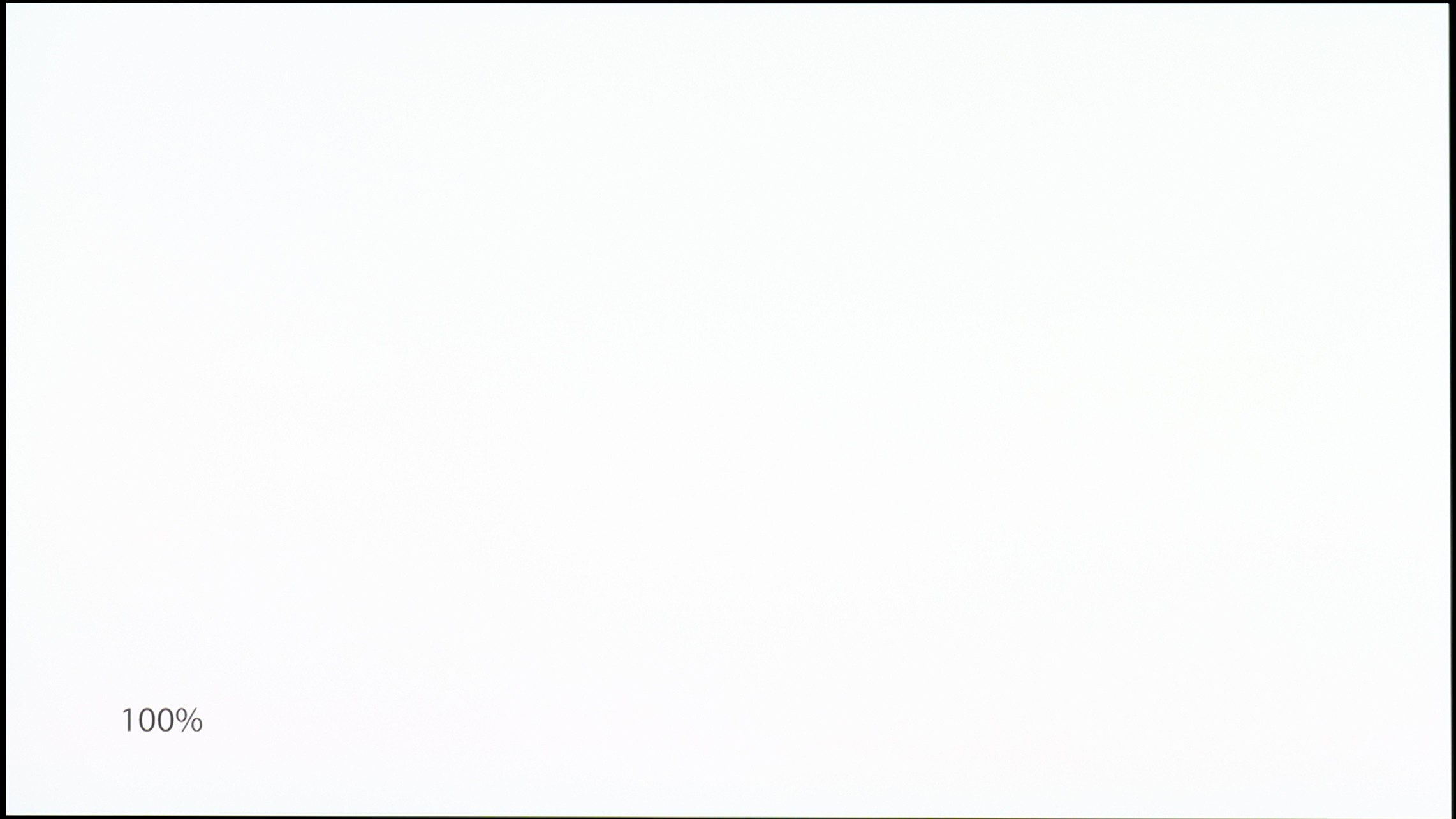
TV features
8.1/10
8.3/10
- HDMI inputs3 x HDMI 2.0, 1 x HDMI 2.1 40Gbps0 x HDMI 2.0, 4 x HDMI 2.1 48Gbps
- OutputsToslink (Optical audio), eARC (HDMI), ARC (HDMI)Toslink (Optical audio), eARC (HDMI), ARC (HDMI)
- Network InterfacesWi-Fi 2.4GHz, Wi-Fi 5GHz, Ethernet (LAN) 100MbpsWi-Fi 2.4GHz, Wi-Fi 5GHz, Ethernet (LAN) 100Mbps
- TV receptionDVB-T, DVB-T2, DVB-S, DVB-S2, DVB-CDVB-T, DVB-T2, DVB-S, DVB-S2, DVB-C
Classic features:
- Recording to USB (terrestrial TV)
- Recording programming
- Picture in Picture (PiP)
- RF remote control (no need to aim at the screen)
- Backlit remote control
- Teletext
- Audio only mode
- Possibility to connect Bluetooth headphones to the TV
- Possibility to simultaneously use Bluetooth headphones and the TV speaker
Smart features:
- AirPlay
- Screen mirroring (Windows Miracast)
- Wyszukiwanie głosowe
- Voice search in native language
- Ability to connect a keyboard and mouse




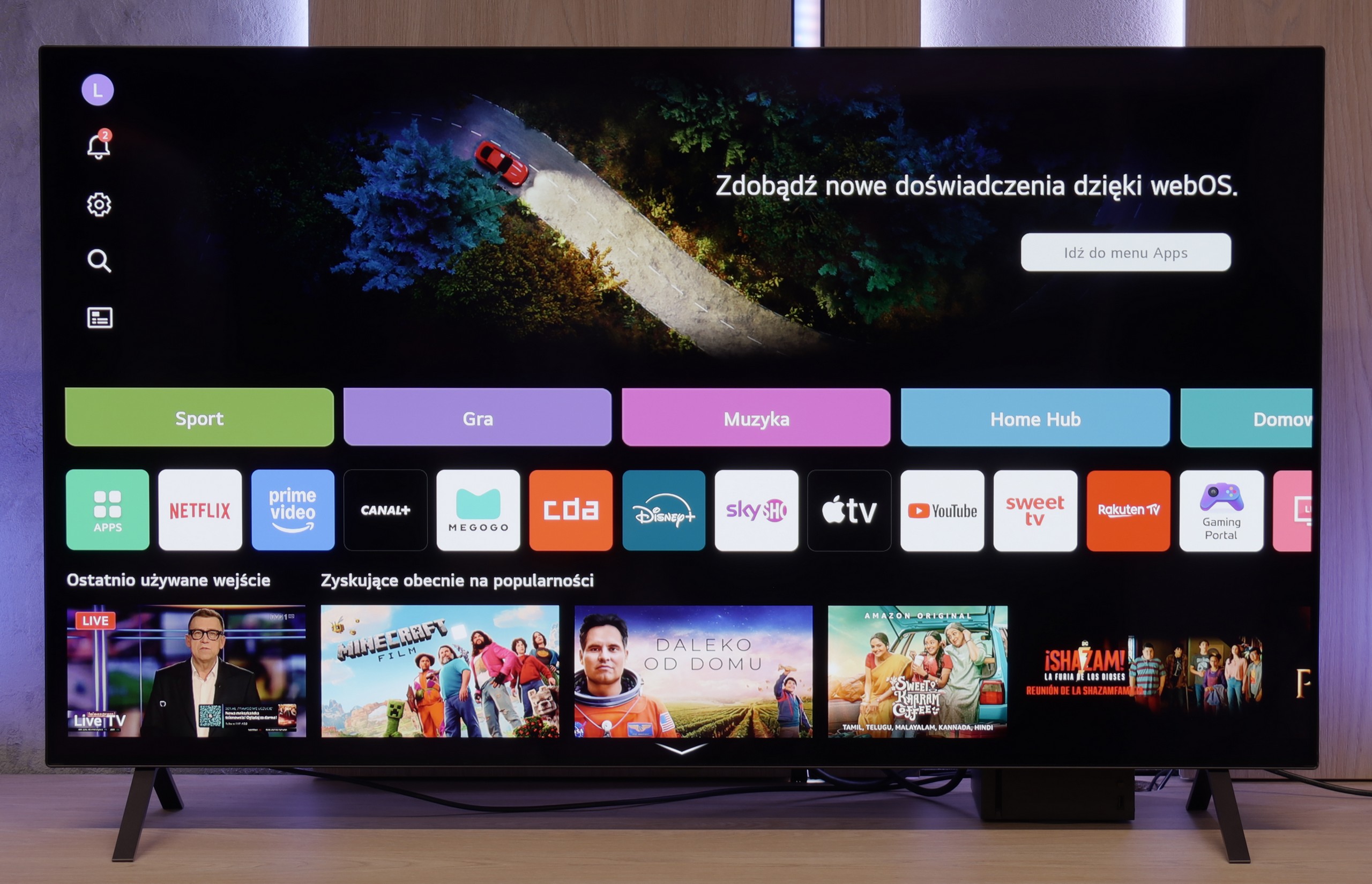
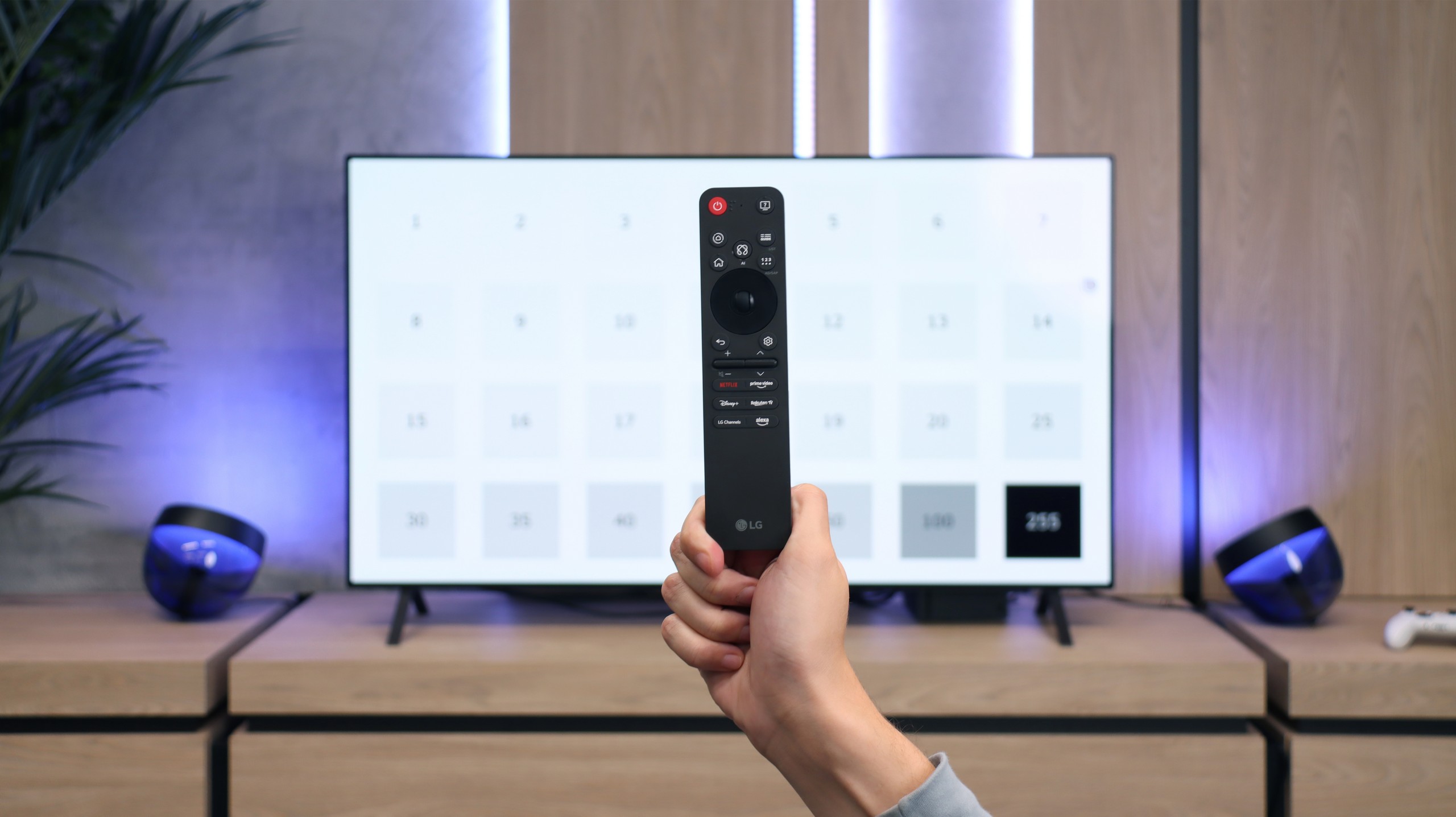
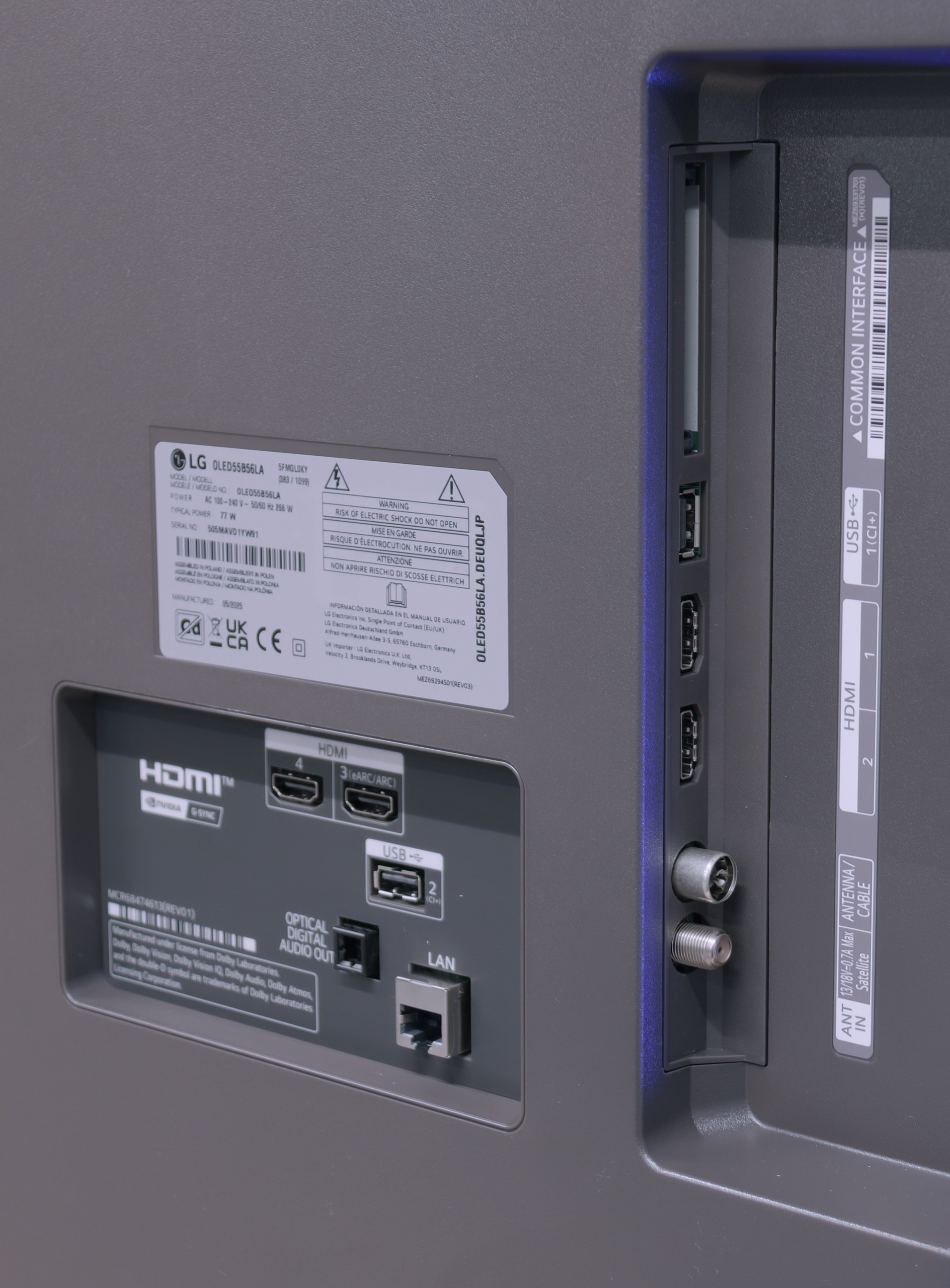
Samsung The Frame LS03D is a television that stands out from other models and is difficult to describe in a traditional way. Of course, it includes all the standard Smart TV features thanks to the Tizen system. The system operates responsively, is comprehensive, and offers a wide selection of applications. The remote control supports voice commands in Polish, and additional devices can be connected via Bluetooth – just like in many other televisions. But that's not the essence of this model.
The greatest strength of Samsung The Frame is its design. The "Art" mode allows you to display thousands of high-resolution images, which, combined with a matte display, look truly exceptional. The effect is surprisingly realistic and hard to compare with any other television.
The bezels may not be the thinnest on the market, but you can customise them in terms of colour and style to perfectly blend with your interior. (Sold separately) And while the bezels themselves are not ultra-thin, the entire construction is sleek and elegant. The wall mount, which is included (its value is approximately £80), also deserves special attention. With it, the television can be mounted practically flat against the wall, with no gap, which further emphasises the "picture" effect.
And what about the cables? Samsung thought of that too. The Frame has been equipped with a One Connect module – an external box where all devices are connected. Only one nearly invisible cable runs to the television, which transmits both the signal and power. The box can be easily hidden in a cabinet or behind furniture, which means nothing disrupts the aesthetics of the interior.
Samsung The Frame LS03D is more than just an ordinary television – it is a thoughtfully designed decorative element that combines the modern functionality of Smart TV with exceptional design and practical solutions. Although it lacks typical features such as USB recording or PiP, it is not a model created with a classic approach to television in mind. LS03D the frame is a television that is easy to love for its innovation, originality, and how wonderfully it fits into any interior.
User features
Although the LG B5 is modern equipment, it hasn't forgotten about those who sometimes just want to... watch television. Without apps, without accounts, without logging in anywhere. It comes with built-in DVB-T2 tuners and the ability to record onto USB, along with a clear and fast EPG guide. Is that not enough? There’s even a working teletext – for many, probably a relic, for others, a daily necessity. We also appreciate the option to turn off the picture and leave just the sound, which is great for listening to music. And if you want to watch quietly – you can easily pair Bluetooth headphones, without a struggle with settings and without delays. Everything works as it should.
SMART TV: webOS
The biggest distinguishing feature of the webOS system – still! – is the way it is controlled. The Magic remote that comes with the LG B5 (in our version B56 – without a numeric keypad) works like a magic wand. You point, click, select. And it simply… works. Intuitively, quickly, and without unnecessary side-to-side clicking. Additionally, there’s an AI voice assistant – quite efficient. You can summon it directly from the remote and use your voice to search for content, change settings, or switch sources. WebOS may not be the most "modern" system on the market, and the built-in ads can be annoying, but when it comes to user convenience – especially with the Magic remote – it still outpaces the competition by a step.
Playing files from USB
8.5/10
8.6/10
Supported photo formats:
Maximum photo resolution:

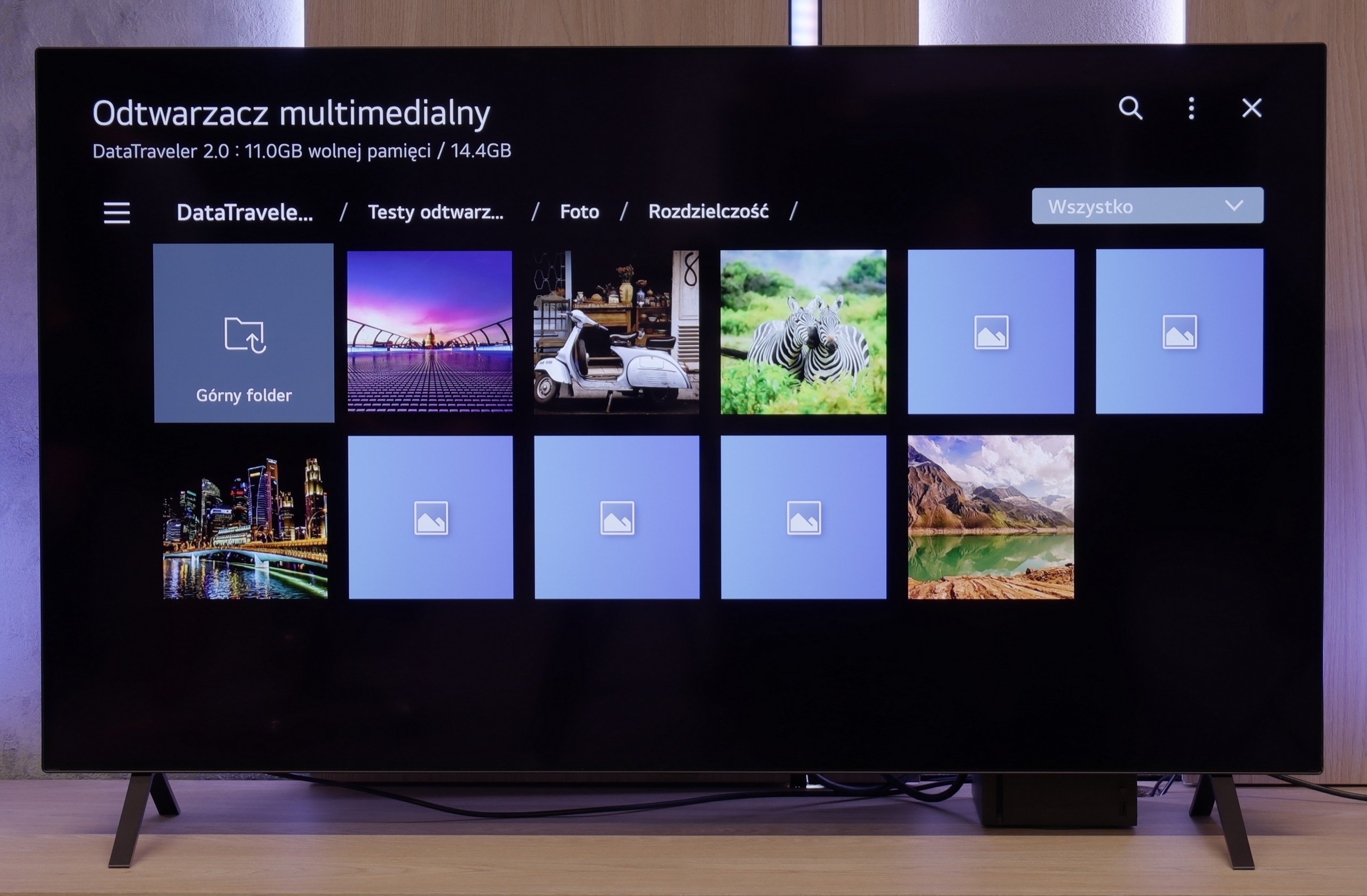
The built-in media player in Samsung The Frame handles most popular video and audio formats without major issues. Video files, even those with subtitles that we have added, play smoothly and without interruptions. The same goes for audio files – here too, there are no significant surprises. The situation is somewhat worse when it comes to handling photo formats. The built-in player has certain limitations and does not support all possible types of graphic files. However, nowadays, most people use wireless photo transfer, so for many users, this will not be a major problem.
LG B5 handles files from USB as it should. Most popular formats work flawlessly, and subtitles – even with Polish characters – are displayed correctly. You can easily play a movie from a USB stick or have a weekend slideshow of your holiday photos without worrying that something will go wrong. However, there was a surprise with HEIC format files – that is, photos saved by Apple devices. While the LG C5 had no issues with them, the B5 stubbornly refused to cooperate and was unable to display them. A minor hiccup that probably won't affect everyone, but it's worth knowing about.
Apps
8.7/10
8.7/10














































Sound
5.8/10
7/10
- Subjective sound quality:5.8/107/10
- Dolby Digital Plus 7.1:
- Dolby True HD 7.1:
- Dolby Atmos in Dolby Digital Plus (JOC):
- Dolby Atmos in Dolby True HD:
- DTS:X in DTS-HD MA:
- DTS-HD Master Audio:
The sound on the Samsung The Frame is… well, quite average. The slim design of the television, while looking impressive, doesn’t allow much space for decent speakers. As a result, the sound is flat and lacks dynamism – exactly like most televisions in this category. Samsung is clearly aware of this, as it offers a special series S of soundbars, specifically created for its "lifestyle" televisions, which includes the The Frame.
We weren't expecting miracles – after all, the LG B5 doesn’t have an advanced audio system, and its built-in speakers look... well, like those in most flat-screen televisions. And yet – it sounded really pleasant. The dialogues are clear, the sound doesn’t boom, and during a calmer viewing, we didn’t immediately feel the need to connect a soundbar. It's a pity that this year LG decided to cut something that worked in the previous generation. We're of course talking about support for DTS formats, which we will no longer find in the B5. If you have films encoded in this format – you'll need to rely on an external player.


